Fragrance Notes
How exactly is a perfume made? A perfume is composed of something called “fragrance notes”. These notes are then divided into categories based on how long the scent stays on your skin.
- The top note, often a light fresh scent, is the first you smell. It lasts for 10-15 minutes before the heart note takes over.
- The heart note lasts for 2-4 hours, blending with your body scent and thus determining how a certain perfume smells on you.
- The base note appears and remains the longest on your skin. It lasts at least six hours and is often a sweet and heavy scent.
Learn more about fragrances and their construction. Read our fragrance guide in Gents Journal.
Below is an overview of the different notes in our range of perfumes. Please click on a note to learn more about its characteristics.
-
Absinthe

The green fairy who the drink absinthe has come to be called, is known for its distinctive green color and high alcohol content. During the late 1800s absinthe was considered to create inspiration and liberate the creative process, in other words: Absinthe became the favorite drink of artists such as Vincent van Gogh, but also for writers as Swedish August Strindberg. The early absinthe contained the substance Thuyone, that in large amounts can cause nerve damage and blindness, but the real factors behind..
Read more -
Acacia
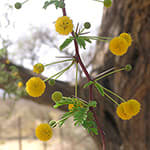
There are many different types of acacia trees, but the species used in the perfume industry is the Acacia Farnesiana, also called the Needle Bush. The bush (or sometimes a small tree) grows in places where the temperature does not go below zero. Essential oil is extracted from the flowers and the scent is said to be a mixture of violet and orange blossom with a slight hint of cumin.
Read more -
Agar-Oud

Oud is a dark heartwood produced from the Aquilaria tree. If the tree becomes infected with certain types of mold from forming a dark oleoresin with a dense and mysterious fragrance. It is an unusual and very rare event, and it requires large volumes to extract a sufficient amount of oil for perfume production. Therefore, oud has a higher price than gold.
Read more -
Akigalawood
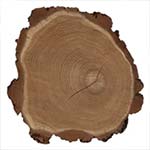
Akigalawood is a fragrance note created by the Swiss fragrance developer Givaudan. The note is produced by separating it from patchouli oil and is described as a woody, spicy, and floral scent.
Read more -
Aldehyde

Aldehyde is a hydrocarbon that is formed when alcohol slowly get oxidized, the slow process of making Aldehyde makes Aldehyde to a rather expensive substance used primarily by the perfumer. Perhaps the most famous perfume with notes of Aldehydes right is Chanel No. 5. One can produce aldehydes from different types of alcohol so that the scent may be different, but what can be said of the fragrance is that it is green, spicy with hints of flowers and citrus.
Read more -
Allspice
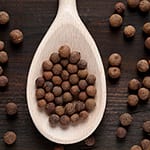
Allspice or Pimenta derived from the Caribbean and is sometimes called Jamaica pepper. The Allspice was discovered by Columbus during his second voyage to the "new world". The Allspice is used primarily for cooking and in the U.S. is common in desserts and in the Middle East has allspice become almost indispensable spice. The dried pepper berries are distilled in order to be able to extract oils that provides hot, peppery spices reminiscent of pepper, cinnamon and cloves.
Read more -
Almond
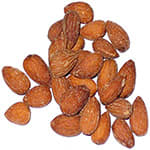
Almonds originate from the Middle East and east to India. Almonds aren’t just the name of the nut but also the tree, the nut which by the way is not a nut, has spread across the world in man's footsteps. From the Middle East via the Mediterranean to North Africa and southern Europe, then across the ocean to America. Today, the U.S. largest producer of almonds, followed by Spain and Iran. The scent of almond feels luxurious and not too sweet, such as vanilla, even if these two go great together. The scent a..
Read more -
Almond Blossom
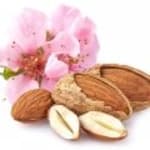
The almond blossom in nature is very aromatic with a honey-sweet scent reminiscent of jasmine and lilies, but with a rich and nutty undertone. The aroma is mild with an underlying sweetness and nutty overtones. In perfumery, almond blossom can also refer to a fantasy note that is supposed to add a floral nuance, light and airy in character.
Read more -
Almond milk

Almond milk is manufactured by soaked processed almonds mixed with water and then sieved. Almond milk is a great alternative for those who are intolerant to regular milk products and is also used in beauty products, such as the body lotion, soaps and shower creams where it has a softening effect, as well as in perfumes. The scent is mild and sweet.
Read more -
Amaretto
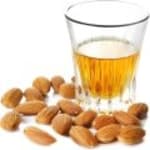
Constructed fantasy note reminiscent of bitter almond (the actual Amaretto liqueur is made from apricot kernels, which have an almondy hue), common in gourmand perfumes.
Read more -
Amber
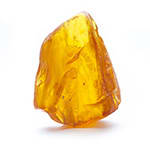
Amber is fossilized resin, popular as jewelry due to its beautiful golden color. It is not uncommon for perfumers to claim that their perfume contains amber, which in English is "Amber" (not to be confused with ambergris).
Read more -
Ambergris
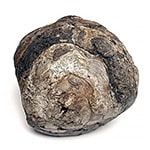
Ambergris is a product or substance produced by the sperm whale. When the spearm wahle have eaten a particular type of octopus. Ambergris is usually found in areas where the sperm whale is common an Ambergris is literally worth its weight in gold.
Read more -
Ambrette
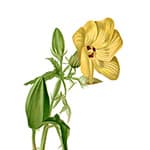
Ambrette is a medicinal plant with its origins in India and even today it is used for a variety of traditional herbal products, although health effects have never been scientifically proven. However, what is certain is that both the plant's leaves and new shoots are edible. Ambrette has become a substitute for musk. The aroma from the essential oil is sweet, powdery and floral with hints of both amber and musk.
Read more -
Ambrettolide

Ambrettolide or Ambrettolide HC Supreme is a macrocyclic musk with great diffusion and power, close to the musk naturally present in Ambrette seed oil and one of the most effective. A classic musk note with a subtle fruity background note often likened to red berries, this variant is exceptionally pure and effective.
Read more -
Ambroxan
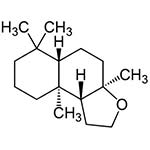
Ambroxan or Ambroxide is a synthetic fragrance created to smell like amber. Many people find it gives a salty, smooth, slightly skin-like scent, while others find it has a creamy, musky tone.
Read more -
Amyl Salicylate

Amyl Salicylate is an organic and fresh fruit-floral, green ingredient reminiscent of unripe banana, with balsamic and herbal notes.
Read more -
Amyris
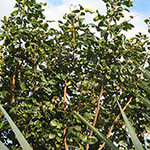
Amyris or fake Sandalwood is a shrub or small tree if you like which has its origins on the islands in the Caribbean. The tree is used for fuel and medicine, but also as in this case for fragrances. The scent of Amyris is similar to Sandalwood but is a little flatter. But the scent is warm, peppery and sweet. It’s a great partner with other wood scents.
Read more -
Angelica

Angelica is a flower and the plant can be eaten and used as a substitute instead of celery. The plant is used by the Sami people to do the Sami flute Fadno. The essential oils obtained by distilling the root and the smell becomes green, peppery, dry and resembles celery, juniper and black pepper.
Read more -
Anis

Anis is not the same as Star anise, and originates from the Mediterranean. Anise's name in Greek is Dill and can derby be confused also with the herb Dill. Anise is a common feature of bread baking and the manufacture of spirits Jägermeister may be the most famous one. In order to produce essential oil from anise the dried seeds are distillated. The smell of anise reminiscent of Star anise and is sweet, spicy and warm with an herb licorice scent.
Read more -
Apple
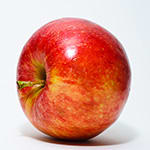
Apple is one of the world's most widely grown fruit and has been cultivated for several thousand years in Europe and Asia. Today, China is by far the largest on-farm and in 2005 contributed 35% of the world market, the U.S has second place with their 7.5%. Apples have been a religious symbol and to the Norse mythology, the apple was associated with eternal youth, in Greek mythology, the apple was a mysterious fruit. The scents can vary depending on whether it is the smell of green apples or red apples you..
Read more -
Apple Blossom
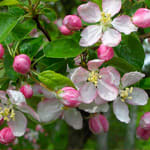
Apple Blossoms are the apple trees' delicate flowers, which cover the trees like small petal clouds during the spring. During the middle ages monks commonly picked the apple blossom and preserved it in vinegar to use as skin remedy and medicine. Today there are more than 7500 different varieties of apples in the world and the colour of the apple blossoms rangers from sheer white to bright cerise. The apple blossom has a playful fuity, crisp and floral scent that is often associated with spring.
Read more -
Apricot
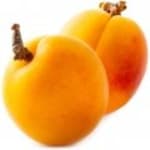
Apricot is a fruit tree, with stone fruits resembling peach or nectarine and whose colour is yellow to orange, sometimes with red streaks. The surface is soft and almost hairless. Apricot as a fragrance note is sweet, velvety and fruity with an almond-like or even candied note, sometimes with lactonic and discreetly animalic nuances.
Read more -
Aquatic notes

Aquatic (or Marine/Ozonic) notes in a perfume is not a specific note but more of a fragrance composition that conveys freshness and purity. An aquatic note captures a sensation of the sea, fresh mountain air and freshly washed sheets and can be found in many modern and "clean" scents.
Read more -
Balsa wood

The balsa tree belongs to the mallow family and grows in the Caribbean, Mexico, Central and South America. Balsa wood is often used for the construction of aircraft models, both because it is very light weight, and because it is so soft that it is easily worked with simple tools. Kon-Tiki consisted of 85 percent of balsa wood. Balsa is also common as a laminate core in the deck on plastic boats. In perfumes balsa wood gives a fresh, woody fragrance.
Read more -
Bamboo
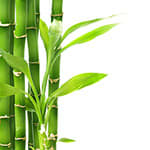
Bamboo is a group of woody grass that grow in tropical and subtropical climate in Asia and America. Bamboo has a distinctive, strong and easily bendable stem that used for house building, furniture, rafts, bridges and much more. In Asian cooking is bamboo’s tender shoots a very common ingredient. Bamboo shoots are furthermore the main food for the endangered panda. In perfumes bamboo adds a green, fresh scent.
Read more -
Banana

A fragrance note with a sweet fruity, tropical character that is primarily associated with yellow, ripe banana. In some cases, it is combined with a bread note to create the impression of banana bread. Banana is a relatively rare ingredient in perfumes and is mainly used in experimental fruit gourmand fragrances to create a playful, happy and slightly exotic fragrance DNA.
Read more -
Basil
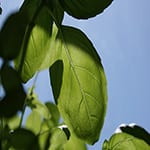
Basil is one of our most popular and used herbs. Basil originated from Asia and is considered sacred in India. In Europe we pretty often associate Basil with Italian cuisine, where the herb comes to play an important role. Essential oil is extracted from the basils either dried leaves or whole plant. The scent is light, fresh and herbaceous and felt soothing with a hint of wood.
Read more -
Basmati rice
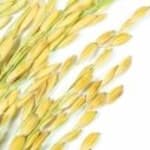
A fictional fragrance note with grassy, nutty tones and hints of earthiness. The scent is reminiscent of steamed basmati rice and evokes a warm, cozy feeling.
Read more -
Bay

The bay or laurel tree is a small tree that blooms from March to April, with greenish yellow flowers that have a sweet fragrance. The leaves of the laurel, has for thousands of years been of use in various fields. In antiquity they distributed victory- and knowledge wreaths of laurel, something that to this day is usual in solemn ceremonies. Dried leaves are used in cooking, and is always included in the bouquet garni . In perfumes essential oils obtained by steam distillation are used. The scent is fresh..
Read more -
Bay Rum

Bay Rum is a distillate made out of alcohol Rum and West Indian bay leaves. Originally, the smell came from the island of St. Thomas in the Caribbean but today is Bay Rum produced by several other Caribbean island nations. The smell of the distillate hit it big in New York and then spread to other parts of the United States and World. Today is the Bay Rum a popular component in soaps, skin care and fragrances.
Read more -
Beeswax
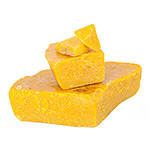
Beeswax and its use have a long history. The Greeks made use of wax to seal leaks in the ship and it is also said that Icarus flew with a pair of wings made of wax, but just when he got too close to the sun the wax melted. Today is often Beeswax the basic products in many skin care products. For perfume, we usually use unbleached purified wax obtained by melting the wax. The scent which Beeswax donates perfume is honey-like.
Read more -
Belladonna
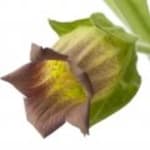
Belladonna is a perennial, almost shrub-like, potato plant native to southern and central Europe, but rarely found wild in the Nordic countries. The fruit is a black, cherry-like berry that tastes sweet and the whole plant is highly toxic. The herb is a recurring ingredient in witchcraft because of its hallucinogenic properties. However, the sweet, subtly floral belladonna note with creamy hints of vanilla and orris butter used in perfumes is generally synthetically produced.
Read more -
Benzoin
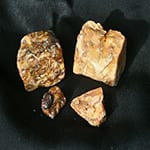
Benzoin is a resin that comes from Styrax trees, a tree family that originated in Asia. Benzoin is a usual part of the perfume industry but also a common feature as incense in the Russian Orthodox Church. The essential oil or extract used for perfume production is extracted using alcohol and fragrance of Benzoin is warm, woody and with a hint of vanilla.
Read more -
Bergamot
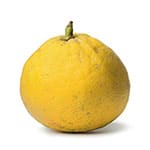
Bergamot is a citrus fruit grown mainly just for the fragrance and flavor of tea, perfumes and cosmetics. The peel is cold pressed to extract essential oils. The aroma of bergamot oil gives a citrus scent that is slightly different from other citrus fruits. Bergamot gives a fuller, sweeter and slightly woody scent that can be described as lemon with hints of pear.
Read more -
Birch

The birch is easy to recognize by the black-white bark. The old rough bark can be cooked in to so-called "Russian Oil" which can be used to lubricate leather. By distilling fresh bark and fresh buds you can extract the essential oils that give perfumes a green, woody smell of resin.
Read more -
Birch tar
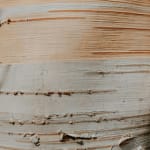
Birch tar is a dark brown, thick liquid substance extracted from the bark of birch trees. The scent of birch tar can be described as powerful and unique with a combination of sweetness and a strong, smoky, spicy odour. The scent is reminiscent of a combination of wood, smoke, leather and tar.
Read more -
Bitter orange
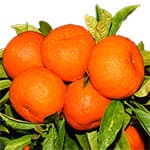
Bitter orange or Seville orange looks like a regular orange but the taste is very bitter and spicy, it’s actually almost inedible. Bitter Orange originates from India where it is common in cooking, in Sweden, Bitter orange is used to flavor certain kinds of bread, but perhaps most common is Bitter Orange as one of the flavor are in mulled wine that is a popular drink at Christmas. By cold pressing the unripefruit essential oils is extracted that give a fresh citrus scent that fells heavier and more bitter..
Read more -
Black Caviar
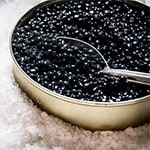
The word caviar comes from the Persian word khag avar, which means 'sea sturgeon'. Black Caviar (also known as Russian Caviar) is the exclusive rum of the sturgeon. Caviar tastes and smells salty of both fish and sea.
Read more -
Black hemlock/Tsuga
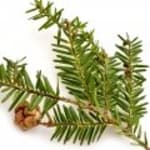
Black hemlock (also called tsuga) is a species of plant in the pine family that occurs in western North America from southern Alaska through British Columbia and the western states of the United States to California. It is mainly found in mountainous regions such as the Cascade Mountains, Rocky Mountains and Sierra Nevada, but it also grows in lowlands. The aroma is slightly smoky with hints of forest, blackcurrant and honey and subtle notes of leather.
Read more -
Black ink
The scent of black ink reminds you of a rainy morning, where you can smell the scent of damp moss.
Read more -
Black pepper
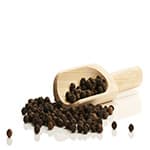
Black pepper is perhaps one of the most common spices in our cooking and are from the same bush and the same grain as white pepper, the difference is that white pepper is harvested ripe and black pepper are harvested unripe but then dried. Black pepper has been known in India since prehistoric times and was when the Europeans came to India a very expensive product. It was then called "black gold", a phrase we today might associate more with oil than black pepper. The black pepper aroma is spicy, hot, fresh..
Read more -
Black tea
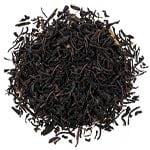
Black tea is made from tea leaves that have been oxidised. Black tea is the most common type of tea on the market, perhaps because of its suitability for flavouring. The popular Earl Grey tea is precisely a black tea, flavoured with aromatic oils from the citrus fruit bergamot.
Read more -
Blackberry
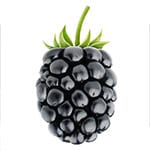
Blackberry is interesting enough not a berry, it’s a fruit, or well a hybrid between berry and fruit is more accurate. We usually find the blackberry in jams, wine and juice and it´s a much appreciated fruit/berry for people how want to lose weight thanks to the low calorie count. In perfume Blackberry is used to give the perfume a sweet, fruity and berry frangrance.
Read more -
Blackcurrant

Blackcurrants grow on a medium sized shrub with lobed leaves. The bush is very aromatic since the leaves and the flowers have the same distinctive aroma as the berries. It is native to northern Europe and northern Asia and should not be confused with redcurrants. The berries that are packed with vitamin C and the smell is perceived as fruity with a slight, almost musk-like background.
Read more -
Blood orange
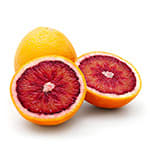
Blood orange is grown mostly in Sicily, Italy. This has exposed Blood oranges for large temperature changes which have led to that Blood Oranges produces a substance that makes the red in order to manage these differences. Blood Orange is common in juices but also in marmalade. So, like other citrus fruits essential oils are extracted by cold pressing the peel. The smell is different from other citrus fruits and is even more plump and cheerful in its fragrance, the fragrance also has hints of raspberries a..
Read more -
Bluebell
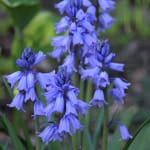
Bluebell is a perennial herb that enchants with its beauty, rich diversity and beautiful colour. The most common variety has sky-blue bells, several on each flower stalk, and grows most often on natural plots and flower meadows. The scent is spring-like, green, slightly sweet and delicately floral, lighter and softer than hyacinth.
Read more -
Blueberry
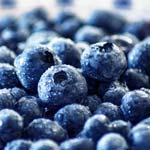
Blueberries are one of the most common plants in Europe. The berries are used in desserts, soft drinks and cakes or eaten as they are, and are as beneficial as they are good! In the past, blueberries were used to cure, among other things, diarrhea and inflammation. Blueberries are also used in textile dyeing and in perfumes, where it gives a mild, fruity, full-bodied fragrance.
Read more -
Boronia
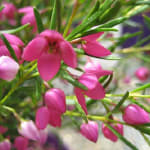
Boronia is a very rare flower growing on the island of Bruny, Australia's southernmost island, off the coast of Tasmania, and only blooms for a short time in September.
Read more -
Bread

Bread as a fragrance note in perfumes was officially created in 2013 by a group of bakers from the English Federation of Bakers for the fragrance ‘Eau de Toast’, partly as an experiment. Since then, the note has gained some traction and served as a complementary dry ingredient in gourmand fragrances. The note is difficult to define but very atmospheric and is described as warm, comforting, ‘bready’ and homely with some woody notes.
Read more -
Breadnut
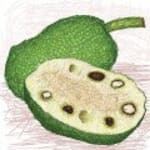
A tropical note based on the breadnut, whose scent and taste resemble chestnut.
Read more -
Broom (Cytisus/Genista)
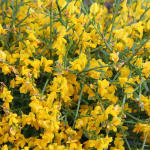
Broom is a genus in the legume family, with yellow flowers that grow wild in parts of Europe, some of which are toxic. A particular variety is the Mount Etna broom (or Broom of Volcano), which grows at the foot of Mount Etna on Sicily. In perfumery, an absolute extract is used, featuring bitter and honeyed notes. This delicate material also evokes the scent of orange blossom, with undertones of tobacco and lime. The highly distinctive scent of broom is especially well-suited to floral, oriental, or citrus-b..
Read more -
Brown sugar
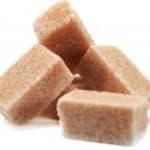
Brown sugar, also known as farin sugar, is a mixture of sugar and cane syrup, which gives it its moist texture and caramel-like flavour. Demerara sugar from Guyana in South America belongs to the same category and is a golden brown, unrefined cane sugar with large crystals that has a caramel-like flavour and crunchy texture. It is often used in baking, especially for crumble pies and crème brûlée, and is also popular as a sweetener in drinks such as coffee and tea.
Read more -
Butter
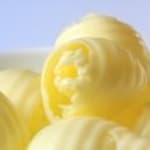
A round, creamy fragrance note, particularly useful in sweet gourmand perfumes, which imitates the sensation of animal butter.
Read more -
Butterscotch

Butterscotch is a type of caramel made from butter and brown sugar. It can be both a solid caramel or a liquid sauce poured over desserts, especially ice cream. It has a unique flavour, often described as sweet, buttery and caramel-like, sometimes with sugary notes.
Read more -
Cabreuva
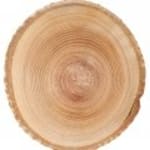
Sweet, woody and floral with a metallic hint, Cabreuva oil is a wonderful material for adding natural richness and complexity to orange blossom and neroli fragrances and, due to its very high neroli content, many other floral perfumes or notes that need to be naturalised or lifted. Cabreuva is an excellent blending ingredient for wood materials (especially cedar) and has a long shelf life, allowing it to be used as an effective fixative alongside the more common synthetic materials.
Read more -
Cactus
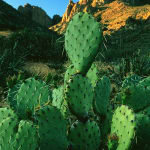
The cactus is a succulent plant that has it’s origin in America. The first plants was imported to Europe in the late 1400s. Christopher Columbus is said to be the first who brought a cactus to Europe. There are between 1 500 and 2 000 different species of cactus plants. The cactus often grows in harsh conditions, but is also a very popular houseplant.The cactus has been used as food, tools, materials and other things throughout history and have also had a major role in religious rituals as well as a medicin..
Read more -
Calamus

Calamus, even known as Sweet Flag, have been used in different cultures for thousands of years, with varying purposes such as to thwart infectious, stimulate appetite and as an aphrodisiac.The root has also been used extensively as a flavoring of liquors, beers and spirits as late as the 1960s. Calamus is one of the main ingredients of absinthe and the original recipe for the soft drink Dr. Pepper. The root has also been used extensively in the perfume industry and in the manufacture of powdered wigs. In th..
Read more -
Calendula
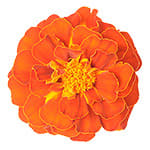
Calendula or marigold is an annual plant that is grown mostly for its beautiful yellow or yellow-orange flowers, which in addition to decorative purposes, also used in skin creams, ointments and natural medicine and in cooking, as a decorative element in salads, for example. In natural medicine calendula is used in preparations to which is said to cure headaches and menstrual pain and other visceral pain. The juice from the flower has an astringent and inflammatory effect which facilitates wound healing. I..
Read more -
Camelia

The camelia is a flower with a mild, sweet and delicat fragrance. The Camelia is also known as "the Oriental Rose" and is in the Far East a symbol of pure and eternal love.
Read more -
Campari
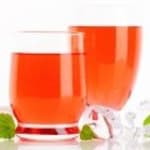
Campari is one of Italy’s most famous and beloved aperitifs, known for its bitter taste and deep blood-red color. The scent is often described as boozy and sharp, with a bitter citrus blend of orange peel and chinotto, complemented by spicy notes of clove and cinnamon, as well as herbal undertones.
Read more -
Camphor
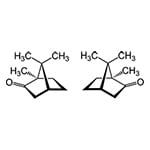
Camphor is usually produced by turpentine. In East Asia, camphor several thousand years derived from the oil of the tree japankamfer forming crystals that get a peculiar odor when exposed to air. Camphor was formerly used in medicines and is now used in essential oils and is also in ointments and Tiger Balm.It is also common to use camphor oil as plasticizer in celluloid to prevent the resin from cracking.In perfumes, camphor gives a distinctive, medicinal scent reminiscent of menthol and eucalyptus.
Read more -
Candied jujube
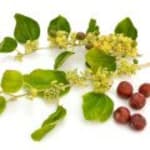
Jujubes are fruits from the Asian shrub Ziziphus jujuba, which today is mainly cultivated in the Mediterranean region but also in Japan and China, among other places (they are also called Chinese dates). The red berries have anti-inflammatory properties and are widely used as dried or candied sweets. The taste and aroma are described as a mixture of cherries, blueberries, apples and raisins, with a hint of almonds.
Read more -
Candle Wax

A constructed fantasy note, with associations to lit candles with a waxy, warming sensation. Candle wax is usually made from stearin or paraffin, where stearin is mostly odourless and harder to define, while paraffin has a petroleum tone. Not to be confused with beeswax, which has more elements of soft sweetness and honey.
Read more -
Candy floss
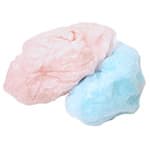
Candy floss or Cotton candy is made by melted sugar drawn out into thin wires and then gathered up into a ball of cotton wool-like mass. A candy floss contains about two tablespoons of sugar. Candy floss is usually sold at amusement parks and markets. The smell of candy floss is sweet and a little burnt.
Read more -
Cannabis

The cannabis note in perfumes can have different tones and intensity depending on how it has been created and what other ingredients are used in the perfume. Typically, the cannabis note is created by extracting terpenes from the cannabis plant. Terpenes are naturally occurring chemical compounds that give the cannabis plant its characteristic odour profile. The cannabis note in perfumes can smell subtly grassy, herbal or resinous, or more distinctive and reminiscent of the strong scent of fresh cannabis..
Read more -
Cantaloupe
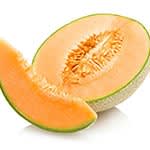
Cantaloupe is a popular melon, both to eat as just a fruit or in fruit sallads or with ham as a starter. Cantaloupe has a sweet, mild scent.
Read more -
Cappuccino

The cappuccino accord is a subdivision of the coffee note group and, with its creamy and softly sweet character, evokes the image of a freshly brewed cup of cappuccino, where aromatic coffee is combined with smooth milk and a touch of sugary sweetness. Particularly effective in imparting a sense of warmth and luxury to a gourmand perfume where traditional dark coffee notes are considered too bitter, and often paired with honey, nutty accords, and maple syrup.
Read more -
Caramel
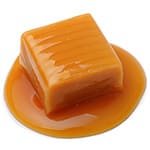
Caramel in this sense should not be confused with a plain candy caramel. Caramel is common to desserts, cakes or ice cream and consists of sugar that is heated until it melts. The name Caramel is likely from the Latin word for sugarcane "callamellus" and the smell is buttery, sweet and creamy caramel.
Read more -
Caraway
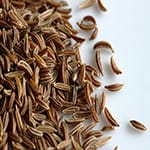
Caraway is not to be confused with cumin; Caraway is a spice that grows wild in many parts of Europe, Caraway is used for baking and seasoning of Aquavit. The essential oils are obtained by distillation. The scent is strong, spicy and with a hint of anise, caraway gives the perfume a masculine scent.
Read more -
Cardamom
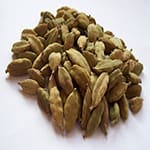
Cardamom grows wild in Southeast Asia and is common in cooking, mainly in India, however, so today is Guatemala the largest producer of Cardamom. Cardamom has been known in Europe since we began to import it in the 1200s. Cardamom gives a distinctive spicy fragrance.
Read more -
Carnation
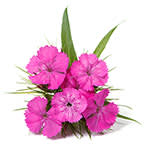
Carnation are available in over 300 different varieties and thrives in the northern hemisphere, Sweden have several varieties of wild carnations. As a scent in perfume, you can use essence or Carnation absolute. The scent will vary depending on what you used to perfume. Essence provides a scent that is almost identical to the flower while the absolute gives a sweeter and spicier floral fragrance.
Read more -
Carrot
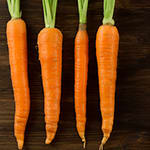
The carrot comes from Europe and Asia, and the name means in Indo-European "little horn" because of the shape. Today the carrot is cultivated in almost all over the world. Believe it or not, but since 2001 the EU has classified the carrot a fruit after that that the Portuguese eat a sweet marmalade made from just Carrot. Sometimes you can hear the phrase "carrot and stick" designed to reward and punishment. The expression is said to come from Winston Churchill as saying at a press conference May 25, 1943: "..
Read more -
Cashmeran

Cashmeran is a synthetically produced musk note with complex woody, spicy elements, along with a soft amber-like sweetness and floral accents. The fragrance, designed in part to mimic real musk, takes its name from cashmere wool due to its warm and soft character.
Read more -
Castoreum
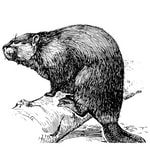
Castoreum, or beaver gland secretion, is an anal secretion that beavers excrete to mark their territory, and in its raw form, it has a very intense scent of birch oil and leather. In perfumes, a synthetic variant is now used for ethical reasons.
Read more -
Cedar
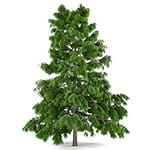
Cedar tree is a conifer of the family silver fir and grows wild in the Mediterranean and the Himalayas at altitudes of 3000 meters above sea level. Cedar tree is Lebanon's national symbol and is portrayed on the flag. The essential oils are obtained by distilling either chips, stumps or bark from cedar wood and today, the essential oils mainly comes from France, Algeria and Morocco. The scent is reminiscent of old wood and has a hint of smoke, resin and cinnamon.
Read more -
Cedrate
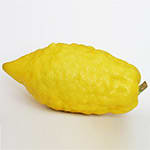
Cedrate fruit is one of the original citrus fruits and has not bred by humans as orange or lemon have. Cedrate fruits are very different from other citrus fruits and are largely composed of a thicker peel and the white stringy bitter substance which is also available in lemon and orange. The peel is very fragrant and has been used for a long time to put a nice smell on clothes. Essential oils are extracted from Cedrate fruits by cold pressing, and the scent is fresh and lemon-like.
Read more -
Chalk

Chalk is actually white, soft limestone that has been formed in marine environment but also contains some clay and quartz. What we commonly call chalk such as blackboard chalk is not always real chalk, but can be a mixture of different salts, such as calcium sulphate. In perfumes, chalk gives a soft, dull slightly dusty scent.
Read more -
Chamomile
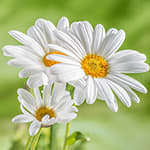
The Chamomile flower is common in most parts of Europe and Asia. The flower has been used for 100’s of years as a medicinal plant and is said to help whit fever, sleep issues and many more problems. The extraction of essential oils from Chamomile is a little tricky, the flower don’t really like to be touched. But when you manage to extract oils the sent of them is spicy, flowery and clearly reminds of the tea.
Read more -
Champaca
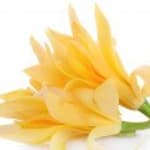
A plant species belonging to the magnolia family, cultivated both as an ornamental plant and for the fragrance of its flowers. Champaca oil is also valuable in skincare and is considered to provide radiance and moisture to aged or tired skin, as it is packed with antioxidants. As a fragrance note, Champaca is described as warm and creamy floral in character, with broad use in the world of perfumery.
Read more -
Champagne

Champagne is a sparkling wine from the Champagne wine region in France, and only wine produced in this area can bear the name. The wine has been made with continuous production since the 1700s using the same method: Méthode Champenoise.
Read more -
Cherry

Cherries are said to originate from the area between the Black and Caspian Sea, the old Normandic name "cherise" comes from the Turkish ancient city called Kerasous. These sweet and tart berries have been cultivated and grown for centuries and still today in France according to tradition, the first crate of cherries for the season from the Céret in the Pyrénées-Orientales, are sent to the presdent of France. Cherries have a delicate, sweet and acidic essence with a nuance of bitterness that comes from the..
Read more -
Cherry Blossom
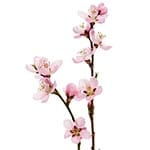 Read more
Read more
-
Chestnut
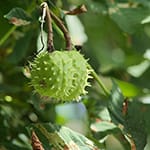
Chestnut is a deciduous tree in the beechfamilie and occurs naturally in Europe, Asia and North America. The chestnut with its oblong leaves and extremely prickly seed pods bears nutty berry fruits that are edible and should not be confused with horse chestnut tree that is common in Scandinavia and is toxic in large quantities. Chestnuts are used in cooking, usually roasted, but also as a puree in desserts and baking. In perfumes the chestnut provides a soft, sweet mellow aroma.
Read more -
Chili
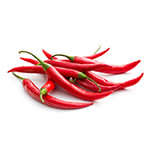
Chili has been grown in about 8000 years; this has been proved by archaeological finds. Chili came to Europe when the Spaniards brought it back from their conquests in South America. Chili is said to have soothing effects on headaches and the active ingredient in chili can be used to make pepper spray. The smell of chili will be strong, hot and spicy, and perceived stimulating.
Read more -
Chinotto
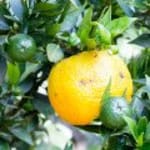
Chinotto is a small bitter citrus fruit similar to an orange but with a distinctive dark, sweet-bitter flavour. Known for its use in the famous carbonated soft drink of the same name.
Read more -
Chocolate
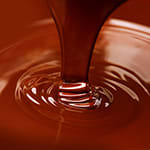
Chocolate has its origins in the South - and Central America and has been cultivated there for thousands of years. Back then they made chocolate drinks, which did not taste as we are used to, when the cocoa bean needs to be fermented in order to get the taste we are accustomed. Then they drank the unfermented chocolate drink and the drink had a name that translated as "bitter water" when the cocoa bean has a very bitter taste. For the Mayan Indians, chocolate was linked to the fertility goddess and the for..
Read more -
Chrysanthemum
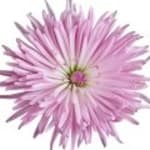
Chrysanthemum flowers usually have a mild, sweet scent that can vary depending on the variety. Some may have a slightly earthy or herbal aroma, while others may be more distinctly floral and aromatic. Overall, their scent is generally not overpowering but is often described as fresh, cosy and pleasant. Many say it is reminiscent of the harmonious floral scent one encounters inside a flower shop.
Read more -
Cinnamon
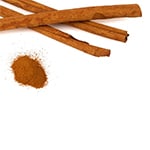
Cinnamon is grown mainly in Asia but to a lesser extent Africa and it is the bark from the cinnamon tree, which becomes our cinnamon spice. The spice was relatively unknown in Europe until the middle Ages. Essential oils for perfume making are produced by distillation. The smell is unusual and not really resembles anything other than just cinnamon. Think cinnamon bun.
Read more -
Cistus
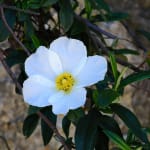
Cistus are evergreen shrubs with profuse, 5-petalled, bowl-shaped, papery flowers in shades of white, pink or purple, each lasting a single day, over a long period in summer. The foliage may be coated with a perfumed resin (Cistus ladanifer) or covered with gray wool.
Read more -
Citrus

A fragrance accord with a blend of citrus fruits in various forms is a fresh and uplifting combination of citrus notes that can include everything from the tangy and fresh scent of lemon, to the sweeter and somewhat floral tone of orange, or the more exotic and refreshing feel of grapefruit. This accord provides a vibrant and energizing fragrance profile, often associated with the warmth and freshness of summer.
Read more -
Civet

The African civet – also known as civet cat – is a predator that is mostly active at night. To mark its territory, the animal secretes a substance with a strong, musky odor from its anal glands. It is from this secretion that civet oil is extracted, which is described as animalistic, warm, with hints of sweetness, smokiness, and musk. For ethical reasons, natural civet has now been replaced in perfumery by the synthetically produced note, civetone.
Read more -
Clary Sage

Clary Sage is the relative of the herb Sage but has a different look and use. Clary Sage has long been used in perfumes but also as a medicinal plant as it is said to reduce the state of fear, anxiety or insomnia. The flower is distilled for essential oils and the scent is very sweet with notes of hay, wood and bergamot. Although animal notes of amber and musk can be found.
Read more -
Clearwood
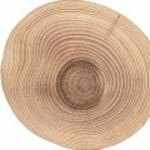
The molecular note Clearwood, developed and licensed by Firmenich, is a softer variant of patchouli, known for its long-lasting nature but also for its clean, modern character. Its fresh style makes it versatile in use, especially as a woody base note in cases where one wants to avoid the natural earthy characteristics of patchouli oil, which are more mossy, damp, and raw. A note that has grown in popularity and can also be blended with natural patchouli to tone down its earthiness.
Read more -
Clementine
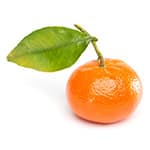
Clementine is a hybrid between mandarin and sweet orange. It is seedless and easy to peel. You will find it in shops in autumn and winter. In perfumes clementine provides a sweet and fruity citrus scent.
Read more -
Clove
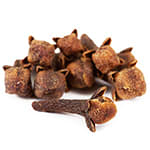
Clove is originally from a group of islands that formerly was called the Spice Islands, now the Moluccas. But clove managed to find its way to Europe and the Middle East already 4000 years ago. The scent is fresh, fruity and feels hot, spicy and slightly woody.
Read more -
Clover
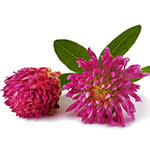
Clover grows and thrives in the northern parts of the world, but you can also find clover in mountain slopes in warmer areas. The scientific name for clover, Trifolium, means three and refers to the plant's three leaves. Sometimes you can find Clovers with four leaves, but these are rare and are therefore said to give luck. Essential oils from Clover smell very green, natural and grass, to some extent reminiscent of sandalwood.
Read more -
Cocoa
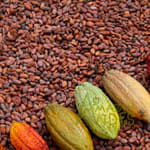
The cocoa tree originates from the tropics of South- and Central America and its name Theobróma cacáo, means "food of the Gods". In the aztec empire cocoa beans were considered extremely valuable and were used for cooking as well as sacred rituals. This almost mythical plant has a rich history involving wars, adventure, love and culinary masterpieces. It is hardly surprising that the cocoa bean evokes feelings because who doesn't love chocolate? Cocoa is a complex scent with bittersweet aromas and spicynes..
Read more -
Coconut
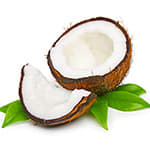
The coconut is the fruit of the coconut palm, which originally was probably native to South America, but is now widespread around the world in areas with tropical or warm subtropical climate. It became known in Europe as early as the 500s through travel stories. Both milk and fruit pulp is used in baking and cooking. Coconut is also used in the beauty industry. Skin lotion containing coconut is said to be good for dry skin, eczema and psoriasis. In perfumes coconut brings a sweet, round scent.
Read more -
Coffee
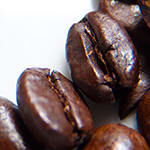
The Coffee plant originates from Ethiopia and from there came to the Arabian Peninsula, from the port of Mocha coffee was exported and the drink is sometimes called just Mocha. The coffee came to Europe via Turkey and its conquest of the Balkans. Coffee Oil gives perfume a strong, rich, aromatic scent reminiscent of freshly brewed coffee.
Read more -
Cognac
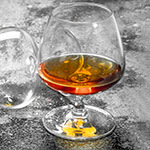
Cognac is a type of brandy, i.e. distilled wine aged in oak barrels. Cognac has a rich and spicy flavour with undertones of oak, fruit and amber.
Read more -
Coltsfoot, Tussilago
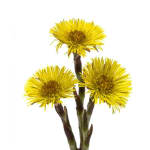
Tussilago (coltsfoot) carries a gentle, fresh scent with delicate hints reminiscent of licorice and freshly picked herbs. It evokes the feeling of early spring sunlight — light, earthy, and soothing. The yellow blossoms shine like tiny suns along the roadside, and the leaves have traditionally been used to brew tea for their soft, comforting qualities.
Read more -
Concrete

An earthy, raw and slightly dusty perfume note with hints of moisture and wetness.
Read more -
Cookie

A sweet, dry, gourmand-inspired fantasy note that is supposed to imitate the impression of biscuits.
Read more -
Copaiba Balsam
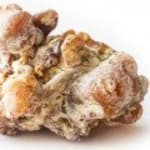
Copaiba Balsam has a slightly sweet, mild, soft woody, slightly spicy-peppery aroma. Like black pepper essential oil, Copaiba can help calm anxious feelings when ingested, as well as supporting cardiac, immune, digestive and nervous system health. The resin is extracted from wild trees, most easily by drilling a hole in the bark, from which the resin drains and collects in a canister. The essential oil is slightly brown in colour and is used in perfumes as a base note and is an excellent fixative for your..
Read more -
Coriander
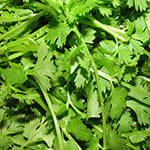
Coriander is an herb used for thousands of years in cooking and to some extent in medicine. It exists naturally in both Europe and Asia and in China it was believed that Coriander gave eternal life. The scent is fresh, with hints of orange. The scent is also perceived as warm, peppery and sweet with hints of anise and musk.
Read more -
Cork

A woody, slightly mouldy note reminiscent of the smell of damp cardboard.
Read more -
Cosmos Flower

The Cosmos Flower originally comes from sunny Mexico, it's colourful flowers bloom only twice a year but can stand for months. It's latin name "Cosmos bipinnatus" comes from the ancient greek word "Kosmos" which means "the ordered entirety". It is hardly surprinsing that this fragrant, sheer and resilient flower is beloved and appreciated all around the world. The Cosmos Flowers scent is intense and sweet with a velvety quality and an aroma of cocoa.
Read more -
Costus
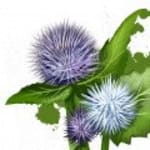
Costus is the root of the thistle plant Dolomiaea costus, found in India, Southeast Asia, and China. The root is used for medicinal or homeopathic purposes, and its essential oil is used in perfumes, incense, and hair washing. It has a strong, lingering aroma that initially smells like violet but changes over time into a more unpleasant, goat-like odor. Another use for the plant is in incense sticks. In perfumery, its scent profile is often described as sensual yet slightly dirty, reminiscent of unwashed ha..
Read more -
Coumarin
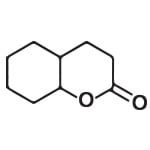
Coumarin is an organic compound which occurs in the form of colorless crystals and is partially dissolvable in alcohol and water. The scent is pleasant and characteristic and reminiscent of freshly mown hay. Coumarin is found in many plants, including several grass and clover species and even cinnamon. In large amounts, it is considered to be toxic and can cause headaches and liver damage. Coumarin is used in perfumery and in the manufacture of medicament with anticoagulant effect.
Read more -
Cucumber
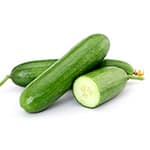
Cucumber has been cultivated for thousands of years and originates from India and from there spread to today's Iran. The cucumber came to Europe with the Romans who began to grow it and could do so all year round with the help of the predecessor of our greenhouses. The Spaniards' conquest of the West Indies and America took the cucumbers on in the world and today Cucumbers is one of our most popular vegetables. Cucumber flavor is often perceived differently depending on the person and it’s the same whit th..
Read more -
Curry leaves
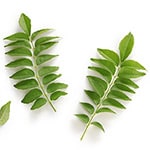
Curry leaves are highly aromatic leaves of the curry tree, a tree in the citrus family. The leaves are mainly used as seasoning in Indian cooking, either fresh or dried. The leaves can also be used as a fragrance in perfumes and are very popular in Ayurvedic medicine, among other things, to relieve aches, pains and itching. Decoction of curry leaves is said to be effective against diarrhea, dysentery and nausea.
Read more -
Cyclamen
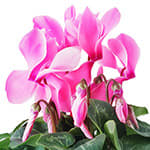
Cyclamen originate from Europe and the Mediterranean countries and is a fairly common garden flower. A few varieties are resistant to frost and can be grown even at the more northerly latitudes. Perfumers will use Cyclamen absolute that provides an earthy and woody aroma.
Read more -
Cypress
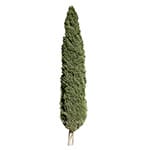
Cypress is a conifer plant that in ancient times was associated with mourning, today, the association remains when the cypress is a common plant on graveyards in both the Christian - and Islamic culture. The wood from Cypress is very durable and has been used to the door of St. Peter's Basilica in Vatican City. Essential oils are extracted from Cypresses pine needles and cones by means of distillation, the scent is fresh, coniferous and with a hint of citrus. Cypress scent is perceived as male.
Read more -
Cypriol
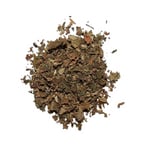
Cypriol is a grass-like plant in the same family as papyrus. The oil extracted from it is used in perfumes and has a woody, earthy scent.
Read more -
Daffodil
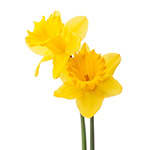
Daffodil or Narcissus is a bulbous plant that blooms in April / May, with a single bright yellow trumpet shaped flower. In the past it was considered decoction of the plant to be soothing, and in large doses paralyzing. The name Narcissus comes from the Greek Narke, meaning paralysis or anesthesia. Daffodil has a mild sweet floral scent and is popular in perfumes.
Read more -
Damask Rose
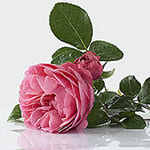
Rosa Damascena, or Damask Rose, is a rose hybrid known for its deep and very intense aroma. It is mentioned as early as 300 BC and is believed to originate from the Middle East. The Damask Rose does not grow in the wild anymore but is cultivated particularly in Bulgaria and Turkey. The highly fragrant oil of the Damask Rose is the finest and most expensive rose oil and is mainly used in the perfume and beauty industry. The Damask Rose is appreciated for its warm but fresh rose scent with a hint of velvety..
Read more -
Daphne accord
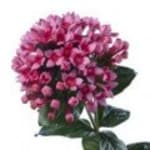
Daphne is a precious, hard-to-grow flower whose scent has a floral sweetness combined with a bright, citrus-coloured top note. The plant is made up of clusters of small, four-spotted flowers that produce a surprisingly generous fragrance for its size.
Read more -
Dates
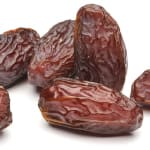
Dates grow on the date palm, a very old plant that has been cultivated especially in Africa and Asia for thousands of years and is now grown especially in the desert areas of North Africa and the Middle East. Dates can be eaten both fresh and dried and used in salads, confectionery and desserts. Dates are sweet and full, both in scent and taste.
Read more -
Davana/Artemisia
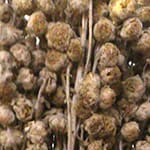
Davana, with the Latin name Artemisia Pallens, is a species of the genus wormwood. It grows wild but is also cultivated for its essential oil, especially in India. The essential oil is extracted from both leaves and flowers. Within aromatherapy davana is considered to be an aphrodisiac as well as calming and relaxing. Davana has a unique scent that is sweet and fruity with hints of masculine wood.
Read more -
Dried fruit
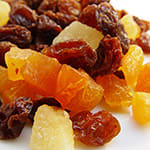
Dried fruit is fruit that has been dried, either naturally or by machine. Raisins, prunes and dates are examples of popular dried fruits. Cranberries, figs, apricots and assorted tropical fruits are also good to dry. Dried fruit is used as a snack as well as in baking and cooking. In perfumes dried fruit provides a rich, sweet and warm tone.
Read more -
Dried leaves

A green autumn note suitable for fougere-inspired perfumes, with hints of fallen, dried leaves
Read more -
Driftwood
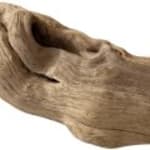
Driftwood has a woody scent with warm musky notes and salty aromatic nuances that evoke marine associations. The notes often include hints of sandalwood, cedar, amber and sometimes soft floral or citrus undertones.
Read more -
Dulce de Leche

Dulce de leche is a Latin American, sweet, milk-based cream. It can also be described as a caramel sauce without cream. It is made by boiling milk and sugar over a low heat for a long time, usually several hours. Vanilla is usually added as a flavouring.
Read more -
Earthy notes

Earthy notes is an accord based on ingredients such as moss, orris root, vetiver, patchouli, etc.
Read more -
Ebony
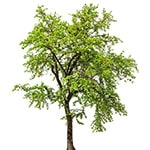
Ebony is a wood with a unique black core and derived from slightly different parts of the world; both in India, Africa and Indonesia have different varieties of Ebony. Ebony has been used a long time but for different purposes, the Egyptians used the Ebony to carve hieroglyphs and writing on sheets of wood. Then when the wood became known to Europeans during the 1500s it was used to make furniture. Today we use the Ebony interior, often small ones, but also to the black keys on a piano. The smell of Ebony..
Read more -
Elemi
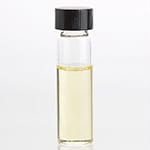
Elemi is a tree that grows in the Philippines. The resin from the Elemi tree is pale yellow with honey-like consistency. Elemi resin is mainly used in lacquers and in some inks. It is also used as herbal medicine to treat bronchitis, catarrh, extreme coughing, scars, stress, and wounds. In perfumes elemi provides a sharp scent of lemon and pine.
Read more -
Elm
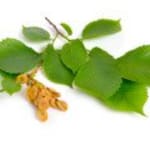
A green, woody fragrance note based on elm trees, with subtle hints of moss and mushrooms.
Read more -
Eucalyptus
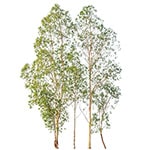
Eucalyptus is a tree genus that in most cases originates in Australia. Eucalyptus grows not always like trees, but sometimes, but rarely as shrubs. Forest fires are weird enough, something that the Eucalyptus need to speed and is dependent of, however, Eucalyptus dislikes frost. The essential oil of eucalyptus is obtained by distilling the blue-green leaves or shoots and branches from the young plant. Eucalyptus gives the perfume a clean, fresh scent with notes of wood and resin, and certain sweetness.
Read more -
Fennel
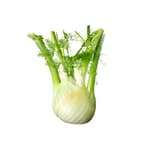
Fennel, also known as crispy anise, is an aromatic and flavourful herb most commonly used in culinary contexts, where it adds a mildly sweet and anise-like flavour to dishes, but has also been appreciated for its potential health benefits. It is rich in fibre, vitamins such as C and K, and minerals such as potassium and calcium. Fennel is also said to have anti-inflammatory and antioxidant properties, and its essential oils are sometimes used in natural medicines and aromatherapy. In perfumes, fennel adds..
Read more -
Fenugreek
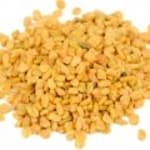
Fenugreek (Trigonella foenum-graecum) is an annual herb used as a spice, mainly in Persian, Indian and Thai cooking. It grows wild from the eastern Mediterranean to China, but is cultivated worldwide. In folk medicine, fenugreek is used internally for underweight, and externally for various inflammations. Results from clinical trials suggest that fenugreek extract supplements testosterone levels in men and also lower blood sugar. Fenugreek's aroma is said to be somewhat nutty and in its sweetest form can b..
Read more -
Fern

Fern or Fougères actually means "fern-like" and aims not for the plant itself, but serves more to the feeling and the scent of wood, nature and grass. Scents with notes of fern is popular among men and is a fairly complex aroma with hints of citrus, lavender and wood, but even notes of rose, oak moss and a general woodiness.
Read more -
Fico d'India
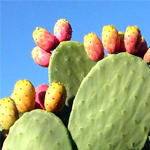
Fico d'India is a cactus that grows on the Italian island of Sicily. The juice from the cactus is said to have healing powers and is a common component of beauty products, scented candles, perfumes and other products designed to enhance well-being. The aromais complex and is described as very green, floral and dry with a velvety scent of orange blossom.
Read more -
Fig
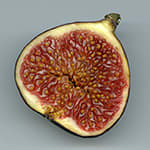
Figs have been popular with people a long time and in a range of human cultures. In Buddhism the Buddha is said to have reached his enlightenment under a kind of fig tree called Bodhi. In the Christian faith Adam and Eve were dressed in leaves from the fig tree. It was not uncommon to use Figs in medical purposes when it is said that Figs can help relieve symptoms of heartburn. Fig extract that is used to perfume is made from seeds and tree leaves. The fragrance is woody and sweet at the same time.
Read more -
Fig leaf
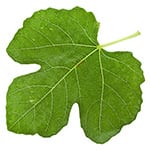
Fig leaf grows singly on the fig tree. The leaves are light green and could be quite large. They have three to five lobes and have short, rough hair on the top of the sheet while the bottom has short, softer hair. One of the most famous references to the fig leaf is in the Bible. When Adam and Eve became aware of their nakedness, they chose fig leaves to hide their private parts. Therefore, the fig leaf has become a term that describes something that is shameful and should be hidden. In cooking the fig le..
Read more -
Finger Lime
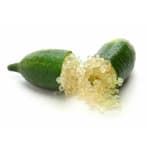
Finger lime is a citrus fruit originally from Australia and its scent is as unique as its appearance. The scent is fresh and intense with subtle notes of lime, citrus and grapefruit. There is also a certain spiciness to the scent, reminiscent of coriander or mint. According to many descriptions, finger lime has a much more intense odour than other citrus fruits, making it a popular choice in cooking and perfume making. The scent can also be described as slightly tart and fresh with an undertone of sweetnes..
Read more -
Fir
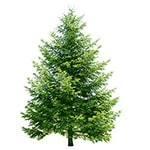
Fir is one of Scandinavia's most common species and grows in almost all of Sweden, Finland and far into Russia. The firs is common to use in wood and paper production, but is also is fir strongly associated with Christmas and the Christmas tree. Perfumers use three different kinds of fir, the Swedish, the Siberian and Silver fir. The production of essential oils is the same way for all three types by distillation of pine needles, but the smell is slightly different. Silver and the Swedish fir are the same..
Read more -
Floral Notes

Floral fragrance notes are notes inspired by flowers and plants. They provide a fresh and soft scent that conveys a sense of spring and summer.
Read more -
Frangipani

Frangipani was originally an Italian aristocratic family where one of the family members created a perfume that went down in history as Frangipani scent. Then, when Columbus made his travels and discovered the New World, one of the Frangipani family members found the plant that was called frangipani. During the 17- and 1800s almost all perfumers had their own Frangipani scent, that seldom contained the actual plant but was a powdery jasmine fragrance. The scent of the Frangipani flower is floral and can be..
Read more -
Freesia
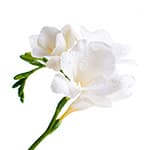
Freesia was discovered in the 1800s and was named by a German scientist named Friedrich Freese and the flower has its origins in Africa. Freesia is a popular flower to have in the garden but it is also popular for use in candles, soaps, skin care and perfume because of its pleasant fragrance. The scent is sweet, light and floral with a little soap elements.
Read more -
Fruity notes

Fruity notes in perfume are achieved by using different aromatic compounds extracted from fruits or synthetic compounds that have similar fragrances to fruits. Common fruity fragrance notes include citrus, apple, pineapple, peach, apricot, cherry, berry and tropical fruits.
Read more -
Fuchsia
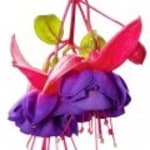
Fuchsia is a herbaceous plant native to South America and best known in Europe as an ornamental plant. In the wild, the flowers have very little fragrance while Fuchsia as a fragrance essence in perfume is characterised by a floral note with subtle hints of sweetness.
Read more -
Galbanum
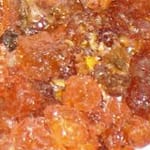
Galbanum is a product derived from plant Ferhula. Ferhula grows mainly in Iran and secrete a rubber-like liquid known as a rubber resin. Galbanum has become a common ingredient in rubber patches, but in perfume Galbanum gives an aromatic spicy scent.
Read more -
Gardenia
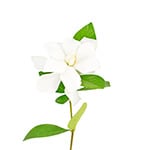
Gardenia is originally from Asia and found in works of art and porcelain made thousands of years ago, but in western countries the Gardenia is an ordinary houseplant. Gardenia can be used as a flavoring of tea and is said to help with fever. One cannot extract essential oils from Gardenia; the perfumer uses dried flower extracts. The scent is sweet, floral and feels silky. The scent is reminiscent of jasmine and feel as exclusive.
Read more -
Gentians
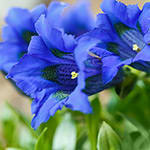
Gentians are growing all over the world from the Alps to New Zealand, Africa and Asia and are named after a Greek king in the Iliad who discovered that Gentian has appetite-inducing properties. Gentian is popular to use in medicinal drugs as well as drinks and have a bitter taste. In fact, the spirit Angostura Bitter, which is an important component of a Manhattan is said to contain just Gentian. The aroma from Gentian is also the somewhat bitter, sharp and strong
Read more -
Geosmin

Geosmin is a collective term for fragrant organic compounds produced by Streptomyces and Nanocystis bacteria, giving a moist, earthy scent when used in perfumes.
Read more -
Geranium
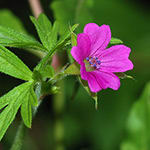
Geranium is growing worldwide, but mainly in the regions around the eastern Mediterranean, it also occurs in wild form in northern countries. Oils of Geranium is obtained by distillation and smells fresh, fruity and with a sweet citrus scent, even hints of rose, mint and spices.
Read more -
Gin
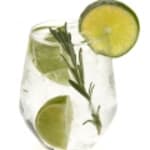
Gin is a distilled alcoholic drink flavored with juniper berries. Gin is mainly produced in England and is used for drinks such as gin and tonic and Dry Martini.
Read more -
Ginger
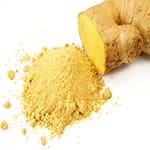
Ginger has a long history of use both in medicine and in cooking. Ginger is a common feature of Asian cooking and is eaten, for example, added on to sushi. We in the West have rather used the ginger in sweets and drinks, including Ginger Ale and gingerbread. In the distillation of the dried, unpeeled root perfumers extract essential oils. The oil provides a fresh, green and citrus-like scent. The scent also fels warm, woody and slightly peppery.
Read more -
Gingerbread

Gingerbread may refer to a cake, or a type of cookie or biscuit made with ginger and other spices. It commonly takes the form of a gingerbread man, generally served around Christmas. Gingerbread men were first attributed to Queen Elizabeth I, who served the figurines to foreign dignitaries. The scent is sweet, warm and spicy.
Read more -
Gold

Gold is a manufactured fantasy note in perfumes, built on both natural and synthetic ingredients, intended to evoke a metallic impression with a sense of luxury and precious jewellery.
Read more -
Gorse
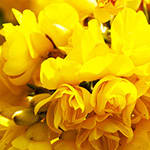
Gorse is an evergreen, thorny shrub that blooms from May to July with large yellow flowers sitting alone or in pairs on short stem from the leaf axils and along with the pungent leaves are characteristic features of this plant. The shrub can grow up to a meter and a half high. Gorse is originally native to western Europe and is very common in the UK countryside. Gorse has a warm, sweet coconut-like fragrance.
Read more -
Grape
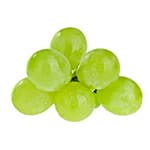
The grape is a berrie and normally grows in bunches. Color, size, sweetness and juiciness vary. Common colors are yellow, red, green and blue. Grapes are used for wine production and in dried form as raisins and to be eaten as is or fruit salad. Grapes have been grown for thousands of years in southwest Asia, India and Eastern Mediterranean, and recently also in America, Australia, South Africa and South America. The scent is mild, sweet and fruity.
Read more -
Grapefruit
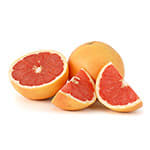
Grapefruit is a citrus fruit and is a hybrid between Pomelo and Orange, it is said that the first Grapefruit were found growing in Jamaica and spread from there with the help of man who wanted to grow it. Today, the United States is the largest producer of grapefruit. There are both white and red grapefruit and the taste essentially the same, the red ones being somewhat sweeter. Essential oil for perfume production is obtained by cold pressing of the peel and the scent is fresh and sweet with a hint of cit..
Read more -
Grass
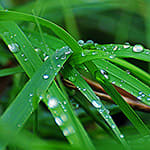
Grass are annual or perennial herbs with greatly varying size that can grow singly or in dense tufts. The scent of grass is fresh, green and moist.
Read more -
Green

Green does not intended the color but the perfumer attempts to evoke the scent of green leaves, grass and fresh cut grass. Perfumers do so by mixing oils and synthetic fragrances, and would thus provide a fresh, rich, yet crisp scent.
Read more -
Green tea
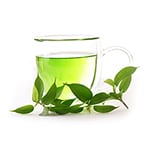
Green tea is made from tea leaves that have not been oxidized. Green tea can be prepared according to the Chinese method, where the leaves are roasted in pans over the fire or after the Japanese method where the leaves are kept under water vapor immediately after they picked to inactivate the enzymes that would otherwise trigger the oxidation process. Green tea has a light, gentle grassy flavor and aroma and is also available in flavored versions, as lemon or mint. Green tea is considered to be extra heal..
Read more -
Guaiac tree
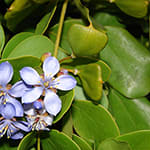
Guaiac tree is a tree variety that comes from the South - and Central America more tropical parts. Tree resin was long considered to have medicinal powers, and still used today in some cough medicines. But the perfume oils extracted through distillation gives a rose-like aroma with hints of violets.
Read more -
Gunpowder

Gunpowder is a collective name for various explosives with the ability to burn and thus develop gas in confined spaces. Gunpowder is used primarily for the propulsion of missiles and rockets, and more and more rarely for blasting. There are two different varieties of powder; Mechanical gunpowder is a mixture of various substances and chemical propellants that are based on chemical compounds in which nitrocellulose is usually included. A sort of gunpowder was manufactured in China as early as the 800s by T..
Read more -
Gurjun Balsam
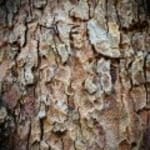
The soft scent of the resin of the Gurjun tree in Southeast Asia is woody, sweet, dry, balsamic and resinous with hints of pine, patchouli and camphor, sometimes with a hint of liquorice - beautifully soothing and meditative.
Read more -
Hasch
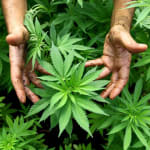
Hasch is a drug that is made of cannabis. Hasch has been used as drug and in medicine since 3000 BC. In perfumes, hash provides a sweet, euphoric scent.
Read more -
Hay
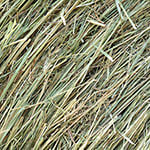
Hay is the common name for grass that have been dried for use as winter fodder for herbivorous animals. Hay has a sweet, warm scent, reminiscent of a summer day in the country.
Read more -
Hazelnut
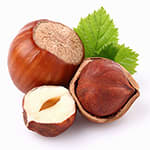
The hazelnut comes from the hazel, a relatively small tree, that originally is a shade plant, but in some areas thrive in open, sunny places. The hazelnut matures from the flower consisting of a small fruit item and two wire-like marks. It takes about five months for the nut to develop. The hazelnut is rich in nutrition with a rigid pericarp. The uses includes baked goods, cooking and cosmetics. In perfumes essential oil are used, obtained by cold or hot pressing , that sometimes will be finished with re..
Read more -
Hedione
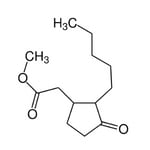 Read more
Read more
-
Heliotrope

Heliotrope is a flower, originally from Peru but today Heliotrope is a usual garden flower. The flower has a vanilla-like scent, and when it comes to perfume, it's not actually extract from the plant that gives the notes but the chemical aldehyde that is a chemically complex substance which has been named Heliotropein. The fragrance notes are warm, sweet and powdery, with a strong vanilla scent.
Read more -
Herbs
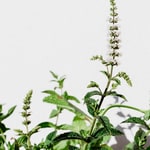
Herbs have historically been used for much more than just as a flavoring. Thousands of years before our current era began, humans used herbs for various medicinal purposes, ranging from anti-inflammatory applications to curing severe illnesses. In perfumery, herbs are used to add additional dimensions and depth to a fragrance. Depending on the herb, the scent can be dark and earthy, or light and fresh.
Read more -
Himalayan Nard
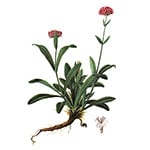
Himalayan Nard is a grass, growing at 3000-5000 meters in India, China and Pakistan. The stem is crushed and distilled into an aromatic amber colored oil used in perfumes and incense, but also in herbal medicine, where it is said to help against insomnia. It can also be used as a sedative. In perfumes Himalayan Nard gives a gentle musk-like scent.
Read more -
Hinoki Tree
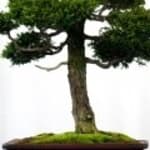
Hinoki is a type of cypress tree that is highly prized in Japan, and is known as the key note in the fragrances of Japanese designer and avant-garde brand Comme des Garcons. The oil from the Hinoki tree is said to give a boost to the immune system and improve hair quality, as well as being good for the sinuses. The scent is balsamic with subtle hints of citrus.
Read more -
Honey
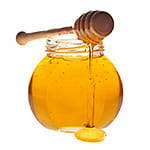
Honey is actually mentioned for the first time in a cave painting found in Spain, the man has thus sought honey in over 10 000 years. Honey has also been important in many religions and is mentioned in virtually all major religions. The honey is extracted from the hives and then you can use pure honey fragrance. The aroma is very sweet and smells honey.
Read more -
Honeysuckle
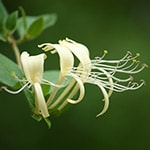
Honeysuckle is a shrub that originates from the northern hemisphere; many ordinates from Europe, China and India. Honeysuckle is popular with hummingbirds whose nectar is also edible for humans; however, Honeysuckles have berries that should not be eaten as they are toxic. From Honeysuckles perfumers can extract something called absolute; the scent is heavy, warm, with hints of vanilla and citrus.
Read more -
Hyacinth
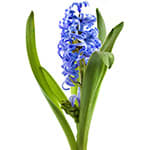
Hyacinth is a flower and has its origin in the eastern Mediterranean and the Middle East. There is a myth about how the flower was named Hyacinth that goes; Hyacinth was a beautiful young boy who was loved by both the Greek god Apollo and Zephyr. But Zephyr became jealous and killed Hyacinth. When Hyacinth were about to be taken to Hades, Apollo made a flower out of Hyacinth’s blood, the flower were then named Hyacinth. Perfumers uses Hyacinth absolute and the scent of this absolute gives a strong, sweet a..
Read more -
Hyraceum
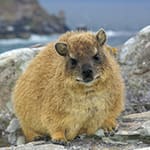
Hyraceum, or "African Stone", is the petrified and stonelike excrement of the animal hyrax. The animal lives in Africa and the Middle East. The little creature resembles a hamster, is the size of a rabbit but the closest living relative is actually the elephant. Hyraceum diluted with alcohol reveals a complex animal scent that can be described as a mixture of musk, civet, tobacco and agar wood.
Read more -
Icing Sugar

Icing sugar is used for coating on pastry, cakes and buns and has a mild, sweet scent.
Read more -
Immortelle
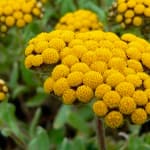
Immortelle is a flowering bush known as the "everlasting flower" as the sun yellow flowers, even when picked, are perfectly preserved. The bush grows wild in the Mediterranean and is used as a spice, decoration and in beauty and skincare products for its anti-aging properties. Immortelles scent is dry herbaceous with a hint of tobacco and honeylike aroma.
Read more -
Incense
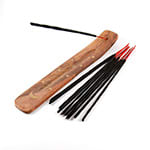
Incense is an ancient tradition of man, and is perhaps as old as humanity. Incense has been used by people on different continents a long time and today is the incense common in most religions. The name of incense aims, however, more to it than being burnt then to the smoke it produced. Incense comes in many forms and the smell is different depending on what the incense itself contains. Common ingredients in the incense is Cedar wood, Rose, Vanilla and Sage.
Read more -
Iris
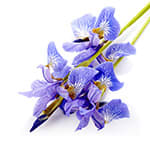
The name Iris is based on the Greek word for rainbow and alludes to the flower color variation. The flower can also be called Orris or Fleur de lis. Essential oils for perfumes is extracted by distillation of the root and the scent is soft, powdery and woody, it may be perceived as violets with a sweet, warm and fruity tone.
Read more -
Iris butter
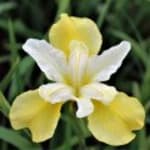
Iris butter, also known as orris butter, is a luxurious and highly appreciated fragrance note with a rich, powdery and slightly earthy scent profile that carries subtle floral and woody undertones. The scent is soft, velvety and elegant, giving perfumes a refined and opulent quality. Iris butter provides a sophisticated and powdery character and is often used as a heart or base note to create depth and richness in fragrance compositions. Iris butter is extracted from the rhizomes of the iris plant, partic..
Read more -
ISO e Super
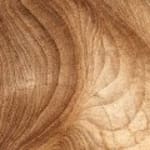
ISO e Super is a synthetic woody note, slightly spicy with hints of amber and soft leather. The scent of Iso E Super is very often loved by people because of its comforting softness from patchouli and cedar, a bit like entering a sauna, while feeling neutral, feather-light and transparent.
Read more -
Ivy

Ivy is an evergreen climbing plant that grows towards the support of trees, houses, walls and other surfaces. It is also a popular growing in pots and window boxes. Ivy occurring in Europe and eastwards to Iran. The leaves are very decorative and the scent is fresh and green.
Read more -
Japanese rose (Hamanasu)
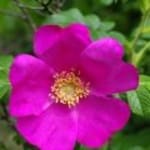
Japanese rose is called ‘Hamanasu’ in Japan. It is a wild rose native to the coast of northern Japan and it is characteristic in that it produces only one flower per plant. The flowers have a rose-like scent with fruity notes and some sweetness. In autumn, it bears red, sweet and sour fruits rich in vitamin C, which is why Hamanasu is often added to rosehip tea.
Read more -
Jasmine Flower
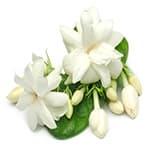
Jasmine Flower comes from Africa, Asia and Oceania, only one is kind found wild in Europe, thou it thrives in warmer climates. The extractions of the essential oil of jasmine flower is very complicated and require several steps, but after the extraction process you get a pure oil that is very powerful and you could easily believe that it is not suitable for perfume production. But when it is diluted and mixed the oil gets a pleasant warm, honey-like scent with notes of musk, fruit and herbs.
Read more -
Jasmine sambac

Jasmine sambac belongs to the category of white floral notes and is an oriental species of jasmine flower originating from the region between Bhutan and India. In character, it is sweeter and muskier, sometimes almost animalic, compared to common jasmine, but can also (especially in its synthetic form) take on a greener, fresher, and fruitier character, making it a more exotic choice than traditional jasmine. Jasmine sambac is a popular white floral note in Asian brands like Japanese Di Ser, but also favor..
Read more -
Jasmine tea
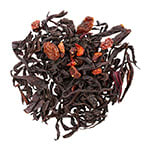
Jasmine tea is one of the most popular scented teas in Asia and especially in China where jasmine tea is a very common drink to all meals. The jasmine flower is a much esteemed perfume ingredient for its honey-like fragrance. The blend between jasmine flowers and tea creates a floral perfume note that is wonderfully warm with a hint of musk and a mild, woody undertone.
Read more -
Javanol
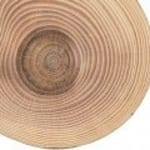
Javanol™ is the latest generation of sandalwood molecules with considerable strength and durability, produced by Givaudan. It has a rich, natural, creamy sandalwood root combined with subtle rose nuances. It can also be used in very low doses (below 0.1%) to add richness and creaminess to all types of chords.
Read more -
Juniper
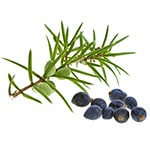
Juniper almost grows over the entire world, from the Northern Hemisphere and its cooler climate to tropical Central America and hot Africa. Juniper is widely used as a flavoring for drinks, for example gin is flavored with juniper berries. Even beer before hops became popular was flavored with juniper berries. The scent is fresh, diverse, bittersweet and spicy but peppery fresh and fiery.
Read more -
Kaolin clay
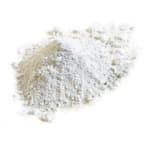
White clay, also known as kaolin clay, has a subtle and soft scent. It can be described as a mixture of freshness and purity with a hint of earthiness. The scent is not overwhelming but rather subtle and mild. When white clay is mixed with water or other ingredients to create a product, the odour can be slightly enhanced and resemble the smell of wet stone dust or wet soil.
Read more -
Karo Karounde
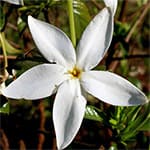
Karo Karo is a fragrant plant that originated in Africa. The plant is very reminiscent of Jasmine and Gardenia. The scent of Karo Karounde is peppery with animalic elements and fits very well combined with Tuberose.
Read more -
Kashmir wood

Kashmir wood is not a timber but an oil mixture to produce a pleasant smell. The mixture usually consists of oils from cedar wood, ambergris, musk and vanilla. The scent is described as spicy, musk with notes of flowers, apples, wood and red fruit.
Read more -
Kumquat

Kumquats are a small citrus fruit grown around the world but mainly in Southeast Asia and the U.S.. Kumquats are usually in some Asian countries preserved with the aid of salt or sugar and is said to cure sore throat, otherwise it is often used for drinks or marmalade. The essential oil from kumquats are extracted by cold pressing and gives a sweet and tangy aroma reminiscent of orange mandarin, but also hints of pineapple.
Read more -
Labdanum

Labdanum is a resin extracted from the cliff rose by distilling various parts of the plant. The resin has a long story of a variety of applications, it is said that the resin has been used to cure coughs, colds and rheumatism, but it was also rumored that the pharaohs of Egypt who had false beards glued the beard with just Labdanum. The smell of Labdanum described as sweet, herbaceous and whit components of fruit and caramel.
Read more -
Lactone (Massoia)

Massoia lactone was formerly from the Massoia wood, a tree that grows all over Malaysia. Lactone is condensed from the tree's bark. And one could easily believe that lactone is the resin but lactone is in fact a chemical substance that is secreted. Formerly Massoia lactone were used to flavor products with coconut flavor. Today, however lactone from the tree has been replaced by synthetic alternatives when the process of the natural lactone kills the tree. Massoia scent is creamy, milky and sweet with a hi..
Read more -
Lapsang Souchong

Lapsang Souchong is a smoked black tea, originally from Fujian Province in China but today is mainly produced in Taiwan. The tea leaves are smoked over burning pine wood, and this gives the tea a characteristic odor reminiscent of tar. The taste is reminiscent of smoky whiskey, tar, and even fire. Lapsang Souchong often mixed with milk to obtain a milder character. In perfumes Lapsang Souchong provides a smoky, warm scent.
Read more -
Lavender
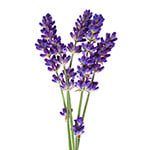
Lavender is strongly associated with aromatherapy and is widely used in massage and relaxation but also to a large extent to the perfume industry. Lavender grows mainly in France and Italy, Lavender oil is extracted by distillation, and France's is leading producer. The scent is fresh, fruity and slightly herbaceous also somewhat woody and floral.
Read more -
Leather

Leather is a durable material made from animal skins, leather is now used much to the manufacture of clothing to car seats just because it is durable. To add leather scent for a perfume you soak the leather is to extract oils and resins. The leather becomes evident in the aroma but also an animal tone with hints of tar, hay and citrus.
Read more -
Lemon

The Lemons origin is unclear, but what we do know is that it is mentioned 6,000 years ago but became common during the 1700s as a cure for scurvy. Lemon note in the perfume is produced mostly by pressing the shell, thereby extracting the essential oils that gives a tangy, slightly sweet with the fresh scent of citrus and is perceived as a summery scent.
Read more -
Lentisk
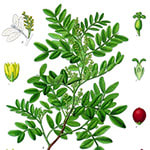
Lentisk is a plant that can beup to three meters high. It blooms from March to May with yellow flowers and then bright red, shiny berries. It usually grows on roadsides and in sparse thickets and forest edges and originated in the Mediterranean and the Canary Islands. Lentisk was early an important medicinal plant. By carving in the bark extracts mastic which is a liquid resin that is traditionally used medicinally and in the manufacture of varnish. Dried resin was chewed to produce cleaner teeth and fres..
Read more -
Lilac
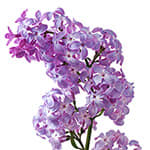
Lilac derived from southeastern Europe and eastern Asia and actually belongs to the same family as the Olive tree. Today Lilac is a relatively common garden plant. In Cyprus, Greece and Lebanon as it is believed that Lilacs is a symbol of love. Essential oils from Lilac are difficult to extract so perfumers often uses a various oil mixtures in order to simulate the smell out of Lilac.
Read more -
Lily of the valley

Lily of the valley grows wild in the northern, cooler regions of Europe and Asia. Lily of the Valley is since the late 1800's, Finland's national flower. The essential oils are extracted from the lily of the valley by means of distillation, and give the perfume a significant floral fragrance with notes of jasmine and hyacinth.
Read more -
Lime
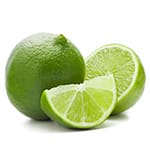
Lime thrive better in warmer and more tropical climate than its relatives and is a common ingredient in food and drinks. Theessential oil is produced mostly by cold pressing of the unripe fruit. Lime is drier, lighter and sweeter than lemon, but lime gives a more intense fragrance. In perfume lime addds a very green, sparkling citrus scent that gives an extra zest.
Read more -
Linden flower
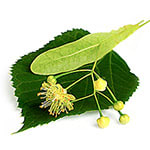
Linden flower are found throughout Europe except the extreme north. The tree has been naming the main street "Unter den Linden" in Berlin and you can brew tea from the Linden flower and it’s said to relieve colds. The extraction of the substance called absolute is an expensive process but the finished absolute gives perfume a warm, very sweet scent of flowers and wood.
Read more -
Lingonberry
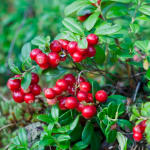
Lingonberry is a berry-like fruit that is often used to add a fresh and tart scent to perfumes. The scent of lingonberries can be described as fresh and fruity, with a slight tartness and a hint of sweetness. It is commonly used in perfumes intended for daily use, as it provides a light and refreshing scent.
Read more -
Lipstick
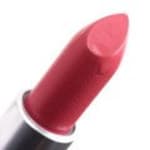
Lipstick is a powdery, feminine fragrance accord that evokes associations with synthetic makeup and the color pink, often based on ingredients like rose, iris, and orris root, sometimes with hints of violet, tuberose (for a more bubblegum effect), or leather.
Read more -
Litchi
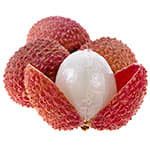
Litchi is both the name of a tree and the fruit from the tree that originated in China but now is cultivated elsewhere, however, almost exclusively in Asia with the exception of the United States and South Africa. Litchi has been grown in about 4000 years and was for a time so exclusive in China that it could be used to pay taxes with. Although the fruit has been known a long time in Asia it was not until the late 1700s before the fruit even were introduced to us in the West. The scent is exotic, enticing..
Read more -
Lorenox
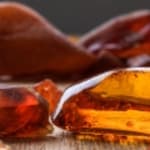
The Lorenox fragrance note is a synthetic ambroxan substitute for ambergris. Complex and aromatic, with animalic notes and hints of leather, amber, wood and musk.
Read more -
Lotus
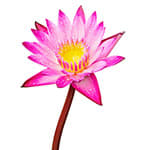
Water Lotus or simply Lotus is often mistaken for being a water lily. The lotus is very viable and the seed can actually survive very long, but without the flower. It has been documented in China, a Lotus, which is over 1000 years old. The Lotus has a prominent role in Asian culture and is strongly associated with Hinduism and Buddhism. The scent of Lotus is pretty and elegant with notes reminiscent of lily, magnolia and freesia.
Read more -
Madonna lily
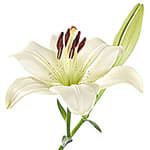
Madonna lily has its origins in the Balkans and the Middle East and probably it was the Romans who brought the Madonna lily home to Italy and then it spread to other parts of Europe. Essential oils are extracted from the plant and gives a rich almost intoxicating smell that tends to be popular with men.
Read more -
Magnolia
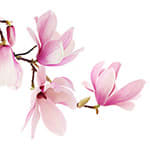
The magnolia is an ancient flower. The first traces of Magnolia is as old as 20 million years which means that the flower existed before bees, then the flower were pollinated by ancestors to our beetles. Magnolia can and has been used for various anti-anxiety medications, but it is also said that Magnolia relieves allergies. The scent of Magnolia is creamy sweet with a light citrus scent.
Read more -
Mahogany
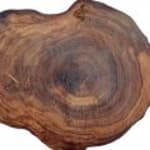
Mahogany consists of one or more hardwood species of dark reddish-brown, hard, heavy-weight wood that has been used primarily as lumber in the furniture industry. The scent of mahogany is often described as masculine, warm and spicy with hints of vanilla, cinnamon and earthiness adding a touch of warmth to the overall fragrance. Mahogany is closely related to teak, which is more golden-brown in colour and has a more floral note in aroma.
Read more -
Mahonial
Mahonial is a synthetic floral molecule by Givaudan (its chemical name is (4E)-9-hydroxy-5,9-dimethyl-4-decenal), developed as a replacement for the mild floral ingredient lilial. Lilial was classified as a fragrance allergen as of 1 March 2022 and has thus been banned in the EU due to a possible link to infertility in animals in studies.
Read more -
Malt

A savoury note reminiscent of roasted barley, beer and whiskey. The fragrance note maltose or malt sugar is an fermentable sugar, a disaccharide, found in malt.
Read more -
Mandarin
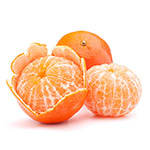
Both the name and the fruit Mandarin is derived from China and it is said that the fruit got its name from the Chinese officials and the color of clothes that these officials wore. The officials were in fact called “great mandarins” and their clothes were orange as the fruit. The essential oils used in perfume are extracted by cold pressed of the mandarin peel. Mandarin gives the perfume a much sweeter scent than other citrus fruits, the scent can be described as similar to orange but much fruitier, hotter..
Read more -
Mandarin Leaf
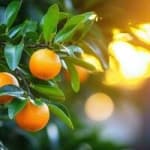
Mandarin leaf comes from the same citrus tree as the mandarin fruit. The leaves have an intense citrus character with hints of floral notes and the overall scent is considered fresh and clean, making it suitable as a complement to fruity citrus accords or green, austere notes such as petitgrain.
Read more -
Mango
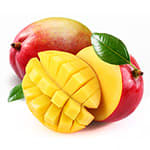
Mango is a sweet fruit that is very popular in drinks, desserts and cooking, for example in chutneys. Mango is Pakistan's and India's national fruit. About half of the mango sold is grown in India. China is also a major exporter. In Europe, the mango is grown only in Spain. Mango is rich in carotene that is good for the eyesight, skin and bones. Mango also contains enzymes that are good for digestion. Mango has a sweet and fruity scent.
Read more -
Maninka

Maninka grows on shrubs or small trees, all over Africa. Also called English snuff-box tree and Fried Egg Tree, hence the flowers reminiscent of fried eggs! The fruit is sweet and is used in cooking. The leaves are used in traditional African medicine, while the wood is useful for furniture, musical instruments and ornaments. Fruit fragrance can be compared with strawberries and passion fruit dipped in chocolate.
Read more -
Maple

Maple is an impressive tree with a beautiful crown and large leaves that during the autumn changes colour like a spectacular firework. In Japan there is a tradition called Momijigari "chasing the autumn" were visitors from all around the country gather in their search for the most beautiful displays of autunm colour in the maple forrests. Except for its beauty, the maple also produces maple syrup which is made from the trees sap, the syrup is an almost obligatory topping for american style pancakes. It take..
Read more -
Marigold
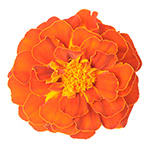
Marigolds or Tagetes are a yellow, yellow-orange flower from South Africa that we usually use as an ornamental plant in the gardens or flower boxes. It is not uncommon for Marigolds to be planted with tomatoes, tobacco, or chili when it is said that it keeps the deer, hares and other wildlife away. Essential oils are obtained by distillation and the scent is green, herbaceous, and with clear hints of caramel.
Read more -
Marshmallows
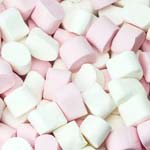 Read more
Read more
-
Mate

Mate is a traditional South American caffeine-rich infused drinkIt is the National Beverage in Argentina, Uruguayand other countries. The drink is made of yerba mate and is refreshing and stimulating thanks to it's content of caffeine. Mate has a sweet, smoky scent.
Read more -
Metal

Metal is an element or an alloy with metallic properties, such as high conductivity for electricity, ductility, and generally a high density and a metallic sheen. Examples of metals are aluminum, lead, gold, iron, copper, platinum, silver, tin and zinc. Metal has been important in human history and has countless uses. In perfumes metal provides a cool, acrid fragrance.
Read more -
Milk

Milk may not be so common scent in perfume, but more common as a beverage or for the production of food. The country that drinks the most milk in the world per capita, Finland is shortly followed by Sweden. Milk as a scent of perfume gives a warm pleasant scent that marries well with sweet fragrance notes.
Read more -
Mimosa
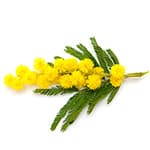
Mimosa is a legume that thrives only in tropical and subtropical climates, therefore, are often the Mimosa mostly found in South America where most of the nearly 500 varieties grow. Mimosa has a strange feature; when touched the flowers go into its night position. A rather buttery concrete is extracted from mimosa using solvents. Mimosa gives a fragrance that is light, dry and sweet as honey, and with hints of violets, ylang-ylang and iris.
Read more -
Mint
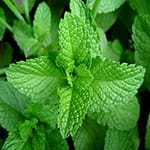
Mint is grown around the world for so long that its exact origin is unclear. Mint has proven to have a range of health-giving benefits, such as help with stomach pain or indigestion. Mint also has a high percentage of antioxidants. The essential oils give perfumes a green, spicy scent of mint. The scent is experienced warmer than that of peppermint oil.
Read more -
Mirabelle
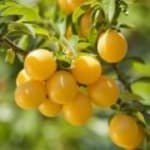
A fruity fantasy note, reminiscent of mirabelle plum, sweet, fresh, fleshy.
Read more -
Moepel

Moepel, or Milkwood, is a gigantic tree which grows only in South Africa. The tree has strong, leathery leaves and bears white flowers and then small, cute golden yellow fruits. The scent is extracted from both the flower and leaves and is completely unique. Very sensual, with a rich tone of honey and tobacco.
Read more -
Monoi
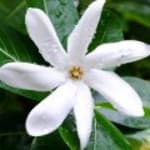
Monoi is an oil extracted from the tiare flower (Tahitian gardenia) and blended with coconut oil - the scent profile is usually associated with sunscreen.
Read more -
Mugwort

Mugwort is a flower or a weed, depending on how you look at it. Mugwort can also be used as a medicinal herb. It grows in the cooler parts of Europe and North America and are often found growing on roadsides or where other plants do not thrive. Mugwort has before hops became known been used for beer, but has also filled many other purposes, Mugwort is said to repel insects. In the Middle Ages it was believed that Mugwort protected against misfortune and fatigue. Oils are obtained by distillation of the dri..
Read more -
Musk
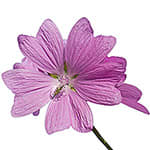
Musk is originally an animal product from musk deer. But today, musk is extracted from plants, including the musk flower that we see on the left, and is produced by chemical means that virtually replaced the animal products. Musk is very common in the perfume industry and gives the perfume a sweet, sensual, powdery scent of leather and wood.
Read more -
Myrrh
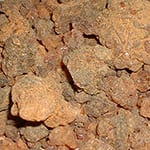
Myrrh is a type of resin derived from a particular tree that grows wild on the Arabian Peninsula and in parts of eastern Africa. Myrrh has been used for incense and perfumes for thousands of years and was one time worth its weight in gold, literally. From the resins extraction of essential oils is done by distillation. The scent becomes medical, warm, dry and bitter with notes of resin and spices.
Read more -
Myrtle
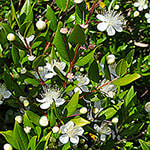
The species Myrtle comes from the Mediterranean countries and are cultivated for its fragrance properties, but it can also be found in gardens. In ancient times and for a long time to come so was it thought that Myrtle was able to help your hair grow faster. In Antiquity and the Middle Ages, was myrtle a symbol of love and immortality. In order to extract essential oils you distill the plant and perfume oils gives a spicy, peppery herbal scent with sweet hints.
Read more -
Nail polish
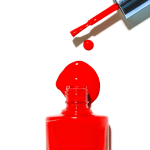
A synthetic note with hints of benzyl acetate and methyl acetate, as well as white flowers or aldehydes. The fragrance note is said to evoke associations with acetone and powdery musk-like tones reminiscent of nail polish.
Read more -
Nectarine
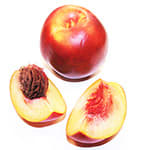
The sweet fruits of Nectarines believe to have originated from China. The smooth nectarines are very closely related to the fuzzy peaches and can even grow in the same tree simultaneously. In perfume peach gives a velvety, creamy and very sweet fruity note, sometimes with a slight hint of coconut. Since there is no way to extract essential oil from the fruit the scent is produced chemically.
Read more -
Neroli

Neroli is the name of the essential oils how are pressed from bitter orange tree flowers. The oil is mainly used for perfume production since the 1600s but has also been used for aromatherapy. It is said besides, that just Neroli oil is one of the secret ingredients in Coca-Cola, but who knows? The oils are obtained by distillation of the freshly picked flowers. The scent that Neroli gives is multifaceted. It has aromas of orange peel, lavender, metallic and floral tones. But not enough there, Neroli also..
Read more -
Nutmeg
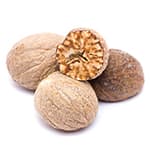
Nutmeg is a popular spice in the whole world; we use it sometimes in potato dishes and dishes of cabbage. But Nutmeg has also been used to the medicine. As a perfume the oil provides a sweet and hot spice that may remind some of turpentine.
Read more -
Nutmeg Flower
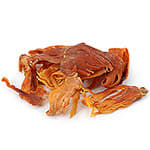
Nutmeg Flower, is confusing enough, not a flower but the last shell of nutmeg nut. Nutmeg flower has just as nutmeg a long history and is originally from the Moluccas in Indonesia. Both the nut and the flower are mentioned for the first time during the 1000's, then the plant is used for medicine. Today perfumers extract oils from the “flowers” by distillation. Nutmeg Flower gives a sweet and hot spicy scent.
Read more -
Oak

The oak is the largest tree in Europe and Scandinavia with a height up to 30 meters. In southern Europe, the species can reach a height of 45 meters. The oak grows in almost all of Europe and came to Scandinavia for over 9000 years ago. Through the ages, the oak used in ship building, both large ships and small boats. Also for furniture and floors are a popular oak wood because of its hardness. Oak is often used for wine barrels as it gives a certain character to the wine. In perfumes oak gives a fresh, wo..
Read more -
Oakmoss
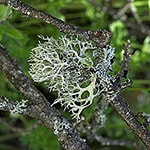
Oak moss has a characteristic odour that is often described as earthy, mossy and slightly woody. The scent can be intense and slightly moist, reminiscent of woodland or a damp forest glade. It also has subtle hints of a fresh and green scent, with some bitterness and a touch of sweetness. Many people also experience a slightly powdery note in the scent of snow lichen. It is important to note that the scent experience may vary slightly depending on the person's sensory perception and ability to smell. But i..
Read more -
Olibanum

Olibanum or Frankincense is a resin from the Boswellia tree and is primarily used for incense and perfume. The name Olibanum has several alleged origins, one theory is that it means "Oil from Lebanon" while others say it comes from the Arabic and is a little carelessly translated “milk”. Olibanum has been used for incense for thousands of years and is sometimes called the white, pure or true incense. The resin is distilled to get essential oils and the fragrance reminiscent of unripe apples, lemons. The sc..
Read more -
Olive
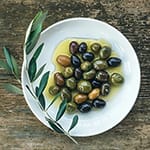
The olive tree originated from countries bordering the eastern Mediterranean at the area, Israel, Palestine and Egypt. The olive tree, its fruit and oil have long been popular and Romans described the olive oil as part of a perfect food. In the first Olympic Games, it was olive oil that burned and the winner crowned with olive branches. They also felt that the olive tree was sacred and it was forbidden to cut or burn them. The olive tree is today associated with peace and olive branches are displayed on the..
Read more -
Olive wood
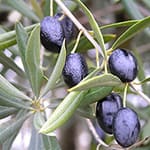
The olive tree is a relatively small, evergreen tree whose fruits are olives, which are used to produce olive oil. The tree has small, white and fragrant flowers. The olive tree grows in the Mediterranean, Asia and Africa. In ancient Greece, the olive trees and the holy man was not allowed to cut down or burn them. The tree has a beautiful color and is grained in an irregular pattern and are therefore particularly sought after for cabinet making and fine art. In perfumes olive wood provides a rich, woody..
Read more -
Opoponax
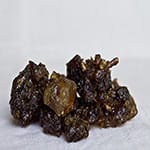
Opoponax is a resin from the plant of the same name, the Opoponax plant really enjoy the warmer climate and grows in Iran, Italy, Greece and Turkey. The resin from the plant has been used by man for incense for a long time. The resin can be called "sweet myrrh" and King Solomon is said to have referred to it as the noblest of resins. Resin oil to perfume is extracted by the use of alcohol and the smell is sweet, powdery and warm, it reminds one of Olibanum.
Read more -
Orange
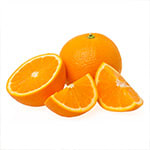
Orange comes from Southeast Asia but today is Brazil, with the U.S., the major producers. The essential oils used to perfume is extracted as other citrus fruits mainly by cold pressing of the fruit peel. The scent can be compared with that occur when you peel an orange and are clear, fresh and hot with a sweet fruity scent.
Read more -
Orange Flower
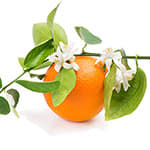
The essential oils of Orange Flower, produced by distilling the flowers has long been a feature of medicine, as early as 1000 BC the oils from the orange flower have been used to treat anxiety and insomnia. The scent is fresh, with clear hints of citrus and is reminiscent of bitter orange, which is a common seasoning in mulled wine, baked goods and liquor.
Read more -
Orange leaf
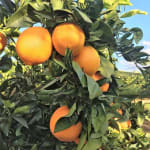
The green leaves of the orange tree combine the bright, sweet scent of the orange fruit with a deep, resinous, woody scent. Orange leaf is popular in all sorts of drinks and desserts and is used much like bay leaf.
Read more -
Orange Peel
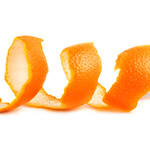
Orange peel is usually used candied to flavor and decoration in pastries, confections and desserts. The scent is sweet, fresh and more powerful and intense than the aroma of the fruit itself.
Read more -
Orcanox
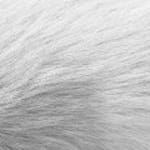
The molecule Orcanox from V. MANE Fils is a new variant of ambroxan, the synthetic form of ambergris, with almost the same chemical composition as Givaudan’s version Ambrofix, but with a stronger and more complex profile than standard ambroxan. Orcanox has quickly taken the perfume world by storm with its musky, woody accords and animalic tones, and despite its explosive longevity, it exudes a warmth, sensuality, and softness that make it unique within the Ambroxan category. Some even describe it as having..
Read more -
Orchids
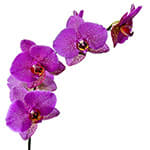
Orchids are a large family with almost 30 000 different varieties. Orchids grow all over the world and although that most are happy in warmer climes, there are a few varieties to find near Antarctica. The orchid has for ages been used for some herbal medicines in China, but the most famous product of the orchid is probably Vanilla. The scent of orchids is similar of rose, hyacinth, cinnamon and jasmine.
Read more -
Oregano
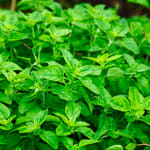
Oregano is a perennial herb. Oregano means mountain happiness and can be traced back to ancient Greece where it symbolised happiness and bridal couples often wore garlands of oregano. Greeks and Romans also used the herb in fragrant baths and massage oil. The plant was also valued for its bactericidal and preservative properties. Today, oregano is an important flavouring agent in food, especially in Italian cuisine. Oregano has an intense peppery flavour.
Read more -
Orris
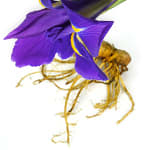
Orris root has a long tradition both as a fragrance and in medical use. The Greeks and Romans used the slightly corrosive fresh juice in cosmetics. In Greece, perfume was also made from the dried root.In France and England small scented sachettes were used in wardrobes and dressing rooms. In today's perfumes, orris absolute or a tincture on the root is used. The scent is mild and powdery.
Read more -
Osmanthus
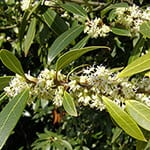
Osmanthus is a plant that might not be so common for the northern parts of the world, namely, Osmanthus is a rather delicate plant that originated from the warmer parts of Asia. Osmanthus is a plant that is always green and blooms in spring, summer and autumn. The scent is quite strong and gives a fruity, floral fragrance that has hints of plum and raisin, Osmanthus is a very exotic luxurious fragrance.
Read more -
Oud (Chinese)
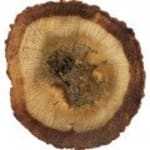
Chinese oud is commonly known as Kinam, the Chinese version of the rare and precious kyara. The aroma is clean, elegant and sophisticated with woody, peppery notes and a typical medicinal flavour, albeit much spicier than the Japanese kyara, which has more of an aromatic sauna character. Kinam in particular has been used as traditional medicine in China since historical times.
Read more -
Oud (Indian)/Oud Hindi
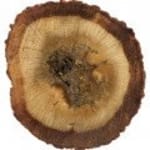
Indian Oud – or Oud Hindi – originates mainly from Assam and Nagaland in India and is known for its complex character, often earthy, sweet and softly animalistic with hints of ‘barnyard’ and stables, not unlike the animalistic style of oud from Laos or Bangladesh.
Read more -
Oud (Laos)
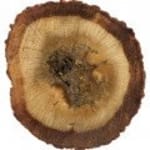
Oud fra Laos i Sydøstasien er kendetegnet ved en dristig, karakteristisk duftprofil med antydninger af læder, sødme og stærke animalske noter. Lao oud er en af verdens mest potente, kraftfulde ouds, og dens animalske egenskaber ligger relativt tæt på indisk oud i duftstil.
Read more -
Oud (Thai)
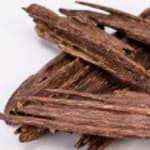
Oud from Thailand consists of a complex and varied selection but is often characterised by a characteristic purity, smokiness and woodiness with some subtle hints of sweetness, but without animal notes.
Read more -
Ozonic fragrance

Ozonic fragrance notes in a perfume are usually created by using synthetic molecules that mimic the scent of ozone. These molecules are usually crisp, fresh and airy in nature, and can provide a sense of purity and vitality. Ozonic fragrance notes can be described as cool, metallic, crisp, airy and clean. The scent can be reminiscent of the fresh scent of rain or sea air. They are often used in perfumes to give a modern and fresh feel.
Read more -
Palmarosa
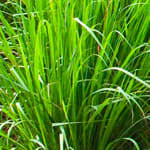
Palmarosa is a grass that grows wild in India and Indochina, it's highly regarded because of the fragrant essential oil that is destilled from the plant. The oil has been used for centuries due to its antiseptic properties as well as its use in perfumes and oils. Palmarosa has an almost entoxicating flowery aroma with light green and grassy notes.
Read more -
Palo Santo

Palo Santo is a wood from Ecuador, Peru, with a hint of citrus in the aroma, often used as incense. It grows in the tropical rainforests of South America and has been used medicinally for thousands of years.
Read more -
Panettone
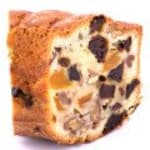
A fragrance note used in gourmand perfumes to emulate the traditional Italian Christmas cake Panettone, a soft pastry flavoured with orange peel, lemon and sometimes dried fruit, almonds or chocolate. The penettone note gives off a soft sensation with a warm sweetness.
Read more -
Paprika
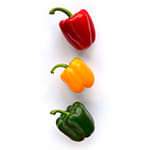
Paprika is a kind of pepper that is originated in Mexico, which is still one of the world's leading parikaproducers. They can be green, yellow, orange and red, and more rarely white, purple and rainbow colored between different maturation stages. Paprika is a very common vegetable in cooking today worldwide. In perfumes paprika is used in the form of essential oils. The scent is fresh and crisp.
Read more -
Papyrus

Papyrus is a robust and tall, perennial herb that can grow up to four meters high. The species is native to tropical Africa. Papyrus has always had a variety of uses. In antiquity, the papyrus was used primarily as a writing material. Papyrus plant was also used for household items and fuel, as well as carpet and clothes. Papyrus also joined together to craft. Norwegian Thor Heyerdahl used the ship made of papyrus during his expeditions. In perfumes, papyrus adds a smoky, coarse scent.
Read more -
Paradisone
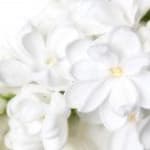
Launched as an alternative to jasmine, Paradisone was first synthesised by Firmenich in the 1990s and is used in a variety of fragrances, particularly floral and oriental scents. The scent is described as a fresh and airy breeze of jasmine, with hints of lemon creating a light citrus feel.
Read more -
Passion flower
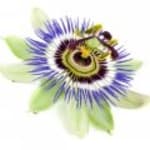
The passion flower originated in North and South America but is now mainly grown in Italy. It was European missionaries in the 16th century who first introduced the passion flower to Europe, marvelling at its unique flower that reminded them of the suffering of Jesus, leading to the name ‘passion flower’ (The Passion of Christ). The plant then quickly became an important part of herbal medicine in Europe and was traditionally used to relieve insomnia, anxiety and nervousness. It has high levels of flavonoi..
Read more -
Passion fruit

Passion fruit is originally from Brazil and Paraguay, but today it is grown all over the world, but in frost-free environments because the fruit is very delicate. The fruit is common to have in desserts, in cocktails or make juice out of. Israel, however, makes a wine called sicar on the Passion fruit. It is said that the passion fruit has some health benefits, and it contains many vitamins and minerals but it is also said that it can help people with high blood pressure. The smell out of passion fruit is..
Read more -
Patchouli

Patchouli is an almost shrub-like plant, first used to keep away moths from attacking the clothes mostly in India but became popular in Europe when trade began whit India. Extraction of the essential oils from the plant is made by distillation of dried leaves, a process which is said to be very complicated. The scent is described as sweet and herbaceous, then slightly earthy with a dry medical nature and notes of spices.
Read more -
Peach
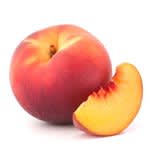
Peach is a stone fruit of the plum genus that has been grown in China for more than 4000 years. The peach flower plays an important role in Chinese culture, the tree is said to protect against evil spirits and the kernels are a common ingredient in Chinese natural medicine. Peach is a popular fruit to eat as it is or in desserts and pastries, both fresh and canned. The scent of peach is sweet, full and fruity.
Read more -
Peach blossom
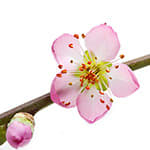
Peach blossom derives from the peach tree which takes its name from when Alexander the Great came to Persia, or today's Iran and saw Peaches and thought that was where it belonged. Actually, Peaches originate from China. Peaches is very common in China, Japan, Korea and Vietnam but not really for the fruit, but because the tree in folklore is associated with immortality. In China, people also believed that Peach blossom kept away evil. The aroma from the Peach blossom is like Jasmine with hints of citrus a..
Read more -
Pear
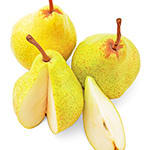
Pears growing on medium to fairly large trees with glossy leaves and large white flowers that has its flowering in the spring. Pear originated in Greece where it has been documented already in 1000 B.C. Pears are available in hundreds of different varieties and are usually sweet, juicy and slightly mealy in texture. Used in baking, for juice and jam, in desserts and other cooking. The scent is sweet, fruity and more complex than apple.
Read more -
Pelargonium
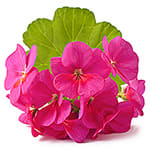
Pelargonium belong to some of the same plant family as Geranium and reminiscent of the same in scent and presentation. Pelargonium was introduced to Europe during the 1600s and quickly became popular. To obtain essential oils you have to distil its leaves and stems. The scent is fresh, green and fruity with hints of both rose and peppermint.
Read more -
Peony

Peony originated in Asia, North America and southern Europe. Peony is said to have gotten its name from a Greek medical student in antiquity. The Students teacher, how were the Greek god of medicine, should have been jealous of the student upon which Zeus turned the student Paeon to flower. The scent of Peony is fresh, flowery and green with a hint of peony.
Read more -
Peppermint
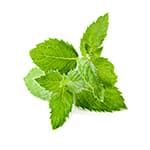
Peppermint grows over almost the entire world. The herb is a common seasoning in everything from candy to food and can be found in the popular Mojito cocktail. Peppermint is just like Mint has been used as medicinal plant and is said to help with stomach pains. Essential oils are obtained by distillation of the dried leaves and the scent is strong, cool and fresh.
Read more -
Peru Balsam
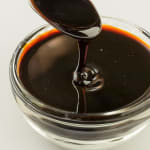
Peru balsam is a dark brown, thick resin from the Myroxylon tree, which grows in South and Central America, as well as the West Indies. The resin is extracted by burning the bark of the tree, which releases the sap that is then collected and boiled. The aroma is described as woody and spicy with typical notes of cinnamon, vanilla, and clove, slightly darker and more bitter than its "twin" Tolu balsam, which comes from the same tree but is extracted differently.
Read more -
Petalia
Petalia is a synthetic molecular note from Givaudan that has a fresh floral scent of peony, lily of the valley and rose with a fruity undertone. Very fresh, light and diffuse.
Read more -
Petit Grain
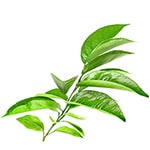
Petit Grain, is French and means "small seeds" the name aim at the essential oil Petit Grain was first made in the skin of the unripe Bitter Orange Fruit. Petit Grain originated from the same trees as Neroli, but not the same part. Petit Grain is the oil from the leaves and twigs from the Bitter Orange tree and is used almost exclusively to perfumes. Petit Grain gives the strongest of all citrus scents but is like Neroli oil pretty special. The scent is reminiscent of rosemary together with a fresh citrus..
Read more -
Pine
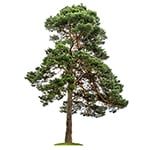
Pine trees are common forest tree and are a tree with many uses of areas, from woodworking to pine resin and pine oil how is said to have medicinal properties of being antibacterial. If you boil Pine needles you get a drink rich in vitamin C. In order to obtain the essential oils they distill needles, twigs, and to some extent, wood. The scent feels refreshingly cool, sweet and slightly dry.
Read more -
Pine needle

Pine needle oil has been extracted for thousands of years and was said for a long time, until the early 1900's, in fact, able to cure nervous disorders because of its fresh forest scent. The smell of pine needle oil is popular with women particularly in Germany and Japan, but generally tend to be popular with most men. The scent is cool and sweet with plenty of pine scent.
Read more -
Pineapple
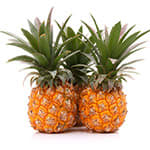
Pineapples are like other fruits which mean that it’s not possible to extract fragrance notes from it. Instead, perfumers use itself out of a so-called aldehyde that is a hydrocarbon. But the fruit pineapple originates from Brazil and Bolivia; where it thrives very well when Pineapple wants both rain and heat. Do you eat lots of fresh pineapple you may experience a tingling sensation in the palate and the tongue; this depends on the subject bromelain irritating the mucous membranes. In perfume the Aldehyde..
Read more -
Pink peppercorns
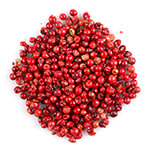
Pink peppercorns are not related to black or white pepper and come from the Peruvian pepper tree. Pink peppercorns are sometimes called "false pepper" an expression that comes from the 1500's, when black pepper was extremely expensive when it was considered to protect against plague, pink peppercorns, on the other hand, were not considered to have the properties and therefore it was also much cheaper. Oil from pink peppercorns have begun to be used in perfume and gives an aroma that is somewhat reminiscent..
Read more -
Pistachio
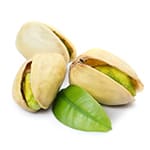
Pistachio is a small tree native to southwest Asia. The tree bears stone fruits containing an elongated seed called pistachios or pistachio. The stone fruit has a hard beige white shell and the core is light green, with a very characteristic flavor. The kernels are eaten whole, either fresh or roasted and salted. Pistachio is also used in ice cream and pastries. In perfumes gives Pistachio a little leathery sweet fragrance.
Read more -
Plums
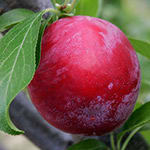
The plum is a very common stone fruit that grow on trees and are available in numerous varieties. The fruit can be consumed fresh, dried, or used for jam, marmelade or compote. In Asian cooking plums are often used in more or less strong sauces. In perfumes plums gives a light herbaceous and fruity scent of just plum.
Read more -
Pomarose
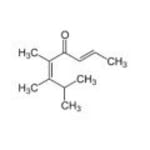
A synthetic molecule of Givaudan with a powerful rose fragrance containing fruity notes.
Read more -
Pomegranate
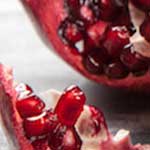
Pomegranate has its origins in today's Iran, where it has been grown since ancient times. But today it is grown in Asia, southern Europe and the Middle East. Pomegranate has been prominent in many cultures and is so today. The Egyptians and pharaohs believed that the Pomegranate was the symbol of ambition and wealth, in Greece it was among other things called fruits of the dead and used to be put on dead heroes' graves. Pomegranate also has a range of health-promoting properties so as to contain high levels..
Read more -
Pomelo
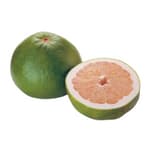
Pomelo is a large citrus fruit common in many parts of the world. Its aroma is fresh and fruity, with a distinct citrus flavour reminiscent of grapefruit but with a milder and sweeter tone. When you peel a pomelo and remove the skin, you can smell the juicy fruit hiding inside. The scent is aromatic and refreshing, with a citrus scent that is both sweet-sour and slightly bitter. Pomelo has a unique scent that differs from other citrus fruits due to its mild and sweet notes. It is usually easier to experien..
Read more -
Popcorn
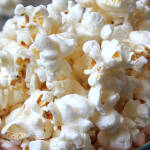
The popcorn scent begins with a seductive aroma of melted butter, creating a round and creamy base. This is followed by the distinctive, slightly burnt note of freshly roasted popcorn kernels. The fragrance is rich and intense, with a sweet undertone that makes the taste buds crave the salty, crunchy flavor popcorn is so famous for. Here are all the perfumes packed with the popcorn note within you.
Read more -
Powdery notes
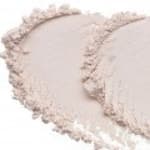
A composite scent chord consisting of a number of natural and/or synthetic notes that add a powdery effect to the perfume composition. The most common powdery notes are iris/orris, violet, vanilla, rose, musk, heliotrope, opoponax and some forms of amber.
Read more -
Praline

Praline is a synthetic gourmand note with warm, vanilla-sweet, and balsamic accents, often based on accords of chocolate, caramel, and the molecules Maltol and Ethyl Maltol. Sometimes, the praline note, with its intense caramel sweetness combined with other gourmand ingredients, can create a chocolate-like liqueur effect, making it perfect as a softer alternative to rum or whiskey to give a dark gourmand fragrance a warm "boozy" undertone.
Read more -
Precious wood
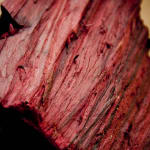
Precious wood notes in perfume are achieved by using a combination of different wood oils, extracts and synthetic compounds that provide a varying degree of wood scent. Examples of precious woods used in perfume include sandalwood, cedar, vetiver, agarwood (also known as oud), patchouli and cypress.
Read more -
Privet flower
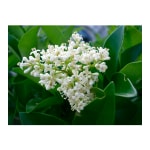
Privet flowers have a unique and enchanting scent that can be described as sweet, floral and slightly spicy. The scent is reminiscent of a combination of honey and jasmine, with subtle notes of vanilla and mandarin. Privet flowers give off a mild, yet wonderfully aromatic scent that fills the space around them. The scent is perfect for creating a calm and relaxing atmosphere in the home or garden, and can also be used as a subtle scent in cosmetic products.
Read more -
Quince
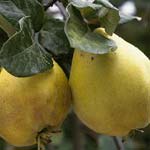
Quince is a tree that belongs to the rose plant family and bears fruit that is similar to a large apple, with firmer fruit flesh used among other things for marmalade. The quince fruit has a sweet, mild scent.
Read more -
Rain
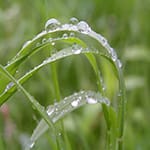
Rain does not mean that a perfume contains rainwater, what the perfumer wants to create is a note that simulates the feeling of rain in a season or a rain on a particular surface. The note in the perfume will vary depending on the scent and feel perfumer wants to convey, as notes of a summer - or spring rain can be found in different perfumers.
Read more -
Raisin
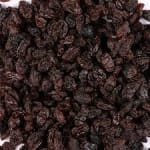
Raisins are seedless grapes that are sun-dried, giving them a dark, somewhat boozy gourmand flavour with hints of dried fruit.
Read more -
Raspberry
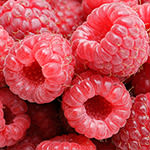
Raspberry is a berry that is grown around the world extensively and is common to make juice or ice cream out of. Russia is currently the largest producer out of raspberries, but Serbia and the U.S. is not far behind. The raspberry fragrance is freshening, fresh and sweet with clear hints of raspberries.
Read more -
Red berries

A fragrance accord evoking associations with red berries such as red currants, lingonberries, cherries, cranberries, and wild strawberries, with main impressions of tartness, berry-like notes, and dark fruity sweetness.
Read more -
Red Currant
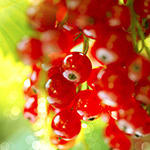
Red Currant is a shrub in the plant genus currant occurs mostly in thickets and on rocky places across the country. The plant has been grown in Europe since at least 300 years. The berries can be used to make jelly, syrup or jam in baking and desserts. The leaves can be used to make wine. The berries are bright and red and tart. The aroma is fruity and fresh.
Read more -
Red Ginger
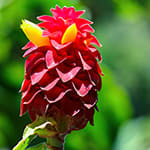
Red Ginger is derived from Malaysia but now also grows in South and Central America. The flower is sometimes in English called the "Jungle King" or "Jungle Queen" and the flower is really white, the red on the plant is just part of the stem. The flower is not used in cooking, despite its name, but as an indoor plant and ornamental. The scent is exotic, rich and floral with notes of musk, rose and ginger.
Read more -
Resin
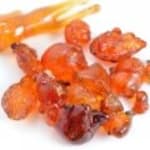
Resin is a collective name for an exudation from conifers with a balsamic amber-like spicy odour. Resins have many uses: violinists use it to make their strings stringy. Examples of different resins are olibanum, elemi and myrrh, all with different power characteristics (see specific scent notes). Amber is resin that has become fossilised.
Read more -
Rhubarb
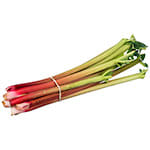
Rhubarb is a plant that originated in China, Mongolia and Siberia. The plant has been known since the 1600s, when it was used as a medicinal plant. During 1700 and the 1800s began using rhubarb in cooking. Rhubarb is usually boiled, to cream, jam and pies. Since it is very acidic it requires much sugar when cooking. The scent is fresh and green. Use of rhubarb in perfumes gives a metallic and cool character.
Read more -
Rice
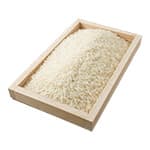
Rice is the seed of the monocot plants Oryza sativa (Asian rice) and Oryza glaberrima (African rice). The rice plant is an annual, one-meter-high grass. After wheat, rice is the most common grown cereal in the world. Mountain rice is grown on conventional farmland while lowland rice is grown in waterlogged fields. Lowland rice is the most common type of rice. In large parts of Asia, people eat rice more or less daily. Rice can also be used to produce milk for allergy sufferers and vegans. In perfumes rice..
Read more -
Rock Rose

Rock Rose is a shrublike and very delicate flower with sheer petals, that originates from the Mediterranean area. These colourful flowers thrive in harsh and rocky landscapes were they spread their incredible scent! Rock Rose essence is very close to amber with its warm, resinlike, woody and spicy aromas.
Read more -
Rooibos
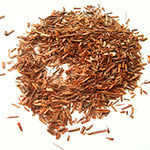
Rooibos is a shrub that only grows in Cederberg, an area in the western parts of South Africa. The name rooibus means red bush in Afrikaans and is sometimes called red tea when used as a caffeine-free alternative to regular black tea. Rooibos has long been used as a medicinal plant and contains many beneficial antioxidants. The scent is described as sweet and fruity with aromas of raisins, nuts and vanilla.
Read more -
Rose
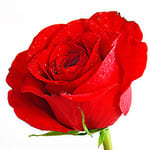
The Rose has its origins in Africa and Asia, were roses have been grown for thousands of years. Today the rose is cultivated perhaps primarily for its beauty and fragrance, but it is and has been strongly linked to various religions and myths. Roses give a very pleasant scent that most people appreciate. The oil has hints of vanilla, honey, but of course, also rose. The aroma is often soft, sweet and feels warm.
Read more -
Rose Water

Rose water is a by-product obtained from the production of essential oils. With its gentle delicate scent, it is a common ingredient in perfumes but is also used as its own product, for example to relieve headaches, freshen up the face or drip in the bath water for extra fragrance.
Read more -
Rosemary
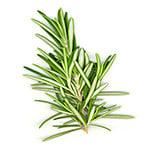
Rosemary is believed to have received its name from Latins "the seas dew" and purports to the rosemary’s numerous, small; blue flowers that gave the impression of dew. The herb has long been used in aromatherapy and incense; it was thought that Rosemary would keep evil spirits away and that it would be good for memory. Rosemary is otherwise common in cooking. The scent can vary between being bitter and sweet with a hint of lavender or more fresh and strong with a hint of eucalyptus.
Read more -
Rosewood
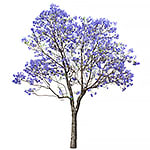
Rosewood or Rose Tree appeared and quickly became a popular ingredient in perfume in the second half of the 1800s. The wood is also common to use in finer carpentry and stringed instruments, it is often Rosewood to use when making guitars, because of their fine patterns in the wood. The oil from rose wood is extracted by distilling mainly in Brazil. The scent is soft and has a woody yet floral scent with hints of rose.
Read more -
Rosewood tree
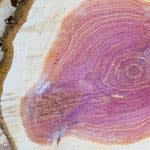
Rosewood trees grow in the South American rainforests and can reach up to 30 metres in height, have red bark and small yellow flowers that grow in clusters. As the name suggests, rosewood smells of a rose-like scent, but with a woody base.
Read more -
Rum

Rum is perhaps generally associated with the Caribbean but the fact is that traces of an ancestor to Rum were produced in China and India since antiquity. Explorer Marco Polo was invited to drink what were described as sugarwine in today's Iran. But it was not until the 1600s as distillation took off and then in the Caribbean. Back then Rum was described as a hot, hellish and terrible to drink. But that has changed and today Rum is one of the world's most popular spirits and is used in the drink Mojito. As..
Read more -
Saffron
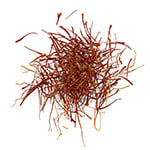
Saffron has been cultivated for thousands of years and it was during the Roman Empire even cultivated in Europe, these Saffron farms disappeared when the Empire fell but got back in the 700's. The price of Saffron is very high because of the intensive harvesting where you have to harvest 200,000 flowers to make one kilogram. Saffron gives fragrance notes of metallic honey and hints of hay and grass.
Read more -
Sage
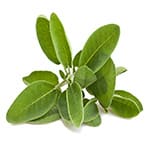
Sage is the old, well-known herb. It has been known in India since about 1000 BC and has since been used in both food and for medicinal purposes. Sage has also been used for incense in religious rituals and other purposes of America's native people. The essential oils which are then used in perfumes are extracted by distillation and the wild sage gives more oil than farmed. The scent is very herbaceous and reminds one of the rosemary.
Read more -
Salt liquorice/Salmiak

Salt liquorice, also known as salmiak candy, is a liquorice-flavoured candy to which the salt salmiak (ammonium chloride) has been added, giving it a strong salty flavour with a sour undertone, unlike regular sweet liquorice, which is rounder and sweeter in taste.
Read more -
Sandalwood

Sandalwood comes from Asia but also groves in Oceania. The tree is said to have some medicinal properties and has long used in aromatherapy. Essential oils for perfume is extracted by distillation and the older the wood the better the scent of the oils that are extracted. Sandalwood has a very unique scent, both simple and complex. The scent can be described as sweet, soft, warm, with hints of oriental spices and rose.
Read more -
Sapodilla/Nesberry

Sapodilla, also known as Nesberry or Naseberry, is a tasty sweet fruit that has a texture similar to a pear, the flavour has similarities to brown sugar, caramel and molasses. The sapodilla fruit is considered to have several health benefits and is widely distributed and found in fruit markets in South and Southeast Asia, South America and the Caribbean. The scent has a calming effect and is described as a mixture of pear and brown sugar with hints of cinnamon.
Read more -
Sea Buckthorn
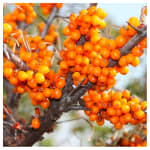
Sea buckthorn has a unique and characteristic scent that can be described as fruity, tart and slightly spicy. The scent can be slightly intense and reminiscent of citrus, with notes of orange, grapefruit and lemon, but with a slightly different twist. The scent can also be described as fresh and healthy, which is ideal for skincare and cosmetic products. Sea buckthorn oil is a popular ingredient in skincare products due to its moisturising and anti-inflammatory properties, and the scent can contribute to a..
Read more -
Sea salt
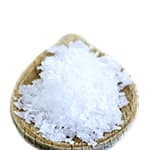
Sea salt is extracted directly from the ocean and contains less than three percent sodium chloride. It is produced by passing sea water in shallow pools where the liquid may evaporate. Sea salt can be coarse, fine or in flakes. It can be used as bath salts and in industries, but primarily it is used to give the food more flavor. Sea salt is often called gourmet salt, and is arguably better than ordinary salt.
Read more -
Seaweed

A salty, marine, iodine, aromatic fragrance.
Read more -
Sequoia

Sequoia (or Redwood) is a kind of conifer belonging to the cypress family. The trees are growing in the U.S., primarily in the states of California and North Dakota and are known as Redwoods because of their reddish bark. The trees tend to grow very old and extremely large both in height and diameter. Sequoia will give a perfume a sensation of needles, resin and cypress. Some think it smells like slightly damp mulch.
Read more -
Sesame seed
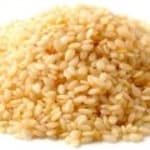
A fragrance note that is not very common in perfumery but occasionally appears as an ingredient to add an oriental or Asian touch to a scent, evoking associations with the seed Sesamum indicum, often used in exotic cooking. It occurs both as a genuine oil and as a CO2 extract, featuring a soft nutty, spicy, and caramelized tone with hints of woodiness and bread.
Read more -
Shiso
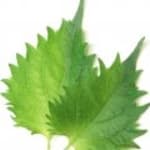
Shiso is a member of the mint family, an Asian culinary herb that has a peppery fresh green profile.
Read more -
Sichuan pepper
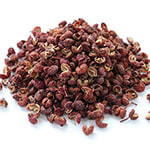
Sichuan pepper is derived from Asia and is named after the Sichuan province in China where it is common in cooking; funnily enough it’s not called Sichuan Pepper in China, but is better known as flower pepper. Sichuan pepper is not actually a pepper and is not related to either black pepper or chili, but consists of dried shell of a small fruit. To extract fragrances from Sichuan pepper you have a difficult process in front of you but the smell is "cool hot" with hints of wood and spices.
Read more -
Skatole

Skatole, or 3-methylindole, is a malodorous constituent of mammalian faeces produced by the breakdown of tryptophan in the digestive tract. It has a floral aroma in low concentrations, contributing to the pleasant scent of flowers such as jasmine and orange blossom, but can also turn into an animal, almost dirty note. The fragrance note, which is also produced synthetically, is not commonly used but is very useful in perfumes with floral and animalic main features in the composition.
Read more -
Smoke

Undefined ingredients that may produce a smoky, indeterminate effect (such as birch tar, various incense, chimney smoke, fire smoke, etc.)
Read more -
Snake Plant

Originally from parts of Africa, the snake plant is a popular houseplant with green mottled leaves, it is hardy and easy to care for and is one of the plants that purifies the air properly. It effectively removes hazardous substances such as benzene, formaldehyde and trichloroethylene, sparing us from toxins, especially from paints and detergents. The flowers have a strong, pungent scent, strongly reminiscent of a mix of hyacinth and lily of the valley.
Read more -
Soap
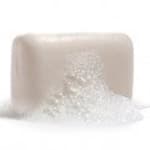 Read more
Read more
-
Sour cherries
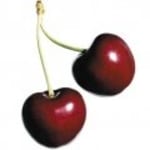
Sour cherries are dark red berries that resemble regular cherries but are more tart and smaller in size. They are often used as a key ingredient in desserts and fruit pies. The fragrance note is described as rich, juicy, with a hint of almond.
Read more -
Spices
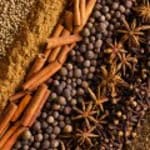
A mixture of different spices obtained from different sources: seeds, fruits, bark, roots, leaves and flowers. They can be fresh or hot, sour or sweet.
Read more -
Star anise
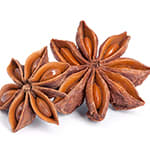
The star anise originates mainly from China and Vietnam, it is also in Asia, star anise is mainly cultivated and used in the kitchen. In addition to uses in cooking, it has been said that Star anise can help with rheumatism and to help with digestion. The scent is strong, hot, and spicy with hints of a sweet licorice scent.
Read more -
Starch
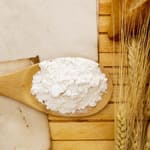
Starch is the most common carbohydrate in our food and is found in potatoes, bread, pasta and rice and is used in powder form, for example, potato flour or arrowroot as thickening agent. Starch consists of molecular chains of glucose. In warm weather, the plants produce more energy than they consume and the surplus is then stored in the form of starch. In perfumes, starch produces a powdery, mild scent.
Read more -
Straw hat

A fantasy note in the fougère category, describing the material of a straw hat or Panama hat.
Read more -
Strawberry
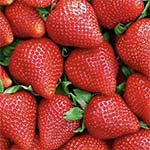 Read more
Read more
-
Strawberry leaves
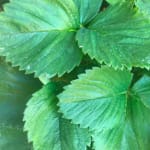
Strawberry leaves themselves have a fresh and slightly sweet scent, with undertones of green leaves. If this scent were to be used in a perfume, it would probably be used as one of many notes, which together create an overall scent.
Read more -
Styrax
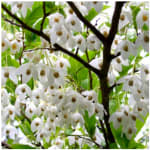
Styrax is a fragrant resinous mass extracted from the bark of certain trees in the Styrax genus. The scent can be described as warm, balsamic, soft and sweet with notes of vanilla, almond, cinnamon and incense. It can also have a subtle floral note with hints of jasmine or lily of the valley. The scent of styrax has a calming and relaxing effect and is often used in aromatherapy and perfume making.
Read more -
Suede
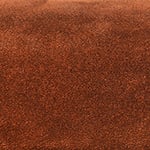
Suede is just like a leather material from animal skins, but Suede has a matte finish, it is because the suede is not the outer most skin layer which gives the smooth leather surface. The name Suede comes from French and literally means "gloves of Sweden". Perfumer uses a synthetic ingredient to produce a scent that is perceived as velvety with a hint of musk, leather and wood.
Read more -
Sugar
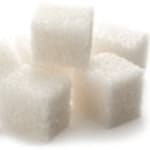
Sugar is used to enhance the sweetness in a perfume with a sugary, powdery scent note.
Read more -
Sugar cane
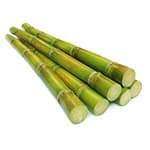
Sugar cane is a perennial grasses in the grass family which may be three to four feet high. The plant is originated in New Guinea. The sap from the sugar cane is boiled and crystallized and turned into sugar. In Southeast Asia, sold freshly squeezed sugar cane juice directly from small street stalls. Distilled sugar syrup becomes an alcoholic drink - rum. An increasing proportion of sugar cane used to produce ethanol as a fuel. Half of the world's sugar comes from plantations in Brazil and India.
Read more -
Sumac
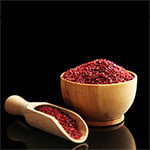
Sumac is a dark purple or red, small berry with a tart, fruity flavor that is widely used in food from the Middle East. The berries are used dried, either whole or ground and gives a sour taste. Sumac is also the main ingredient of the spice mixture Zatar also widely used in the Middle East. In perfumes sumac provides a fresh, tangy scent.
Read more -
Sunscreen

Sunscreen carries the scent of summer – warm skin kissed by the sun and a whisper of sea breeze. Often enriched with notes of coconut or tropical sweetness, it also holds the clean, mineral essence of zinc oxide — that unmistakable fragrance of sunlight, evoking memories of golden beaches and carefree days in the sun.
Read more -
Swedish candy

The fantasy note consists of ingredients to illustrate the contents of a bag of the classic Swedish sweet, with elements such as sour, sweet and salty.
Read more -
Swedish Fish Candy

Swedish Fish Candy is a wine gum with a unique berry flavour, often compared to lingonberry or a combination of berry flavours. This distinct fruity flavour makes it stand out from other gummies. Another variant of Swedish Fish is available with a salmiak flavour.
Read more -
Sweet Liquorice

Liquorice is extracted from the liquorice root which is a plant with roots that can grow up to a meter long. The roots provide a sweet licorice flavor, not to be confused with salty licorice, which is a common flavoring in candy, medicine, liquor and ice cream. The dried roots have long been used in traditional Chinese medicine and can be purchased at many health food stores. Liqourice contains anetol, an aroma with a distinct taste of sweet anise and fennel that gives liqourice its characteristic flavor.
Read more -
Tangerine
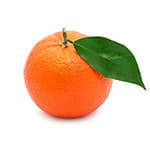
Tangerine is a small citrus fruit that resembles the Mandarin and have just as mandarin Chinese and Asian origin, the name is said to come from the city of Tangier in Morocco, where the fruit was grown and shipped to Europe. The essential oil is extracted by cold pressing of the peel and the scent is warm and slightly sweeter than other citrus scents. Tangerine smells like a mix between Orange and Mandarin.
Read more -
Tarragon

Tarragon is an herb we might recognize from the French Béarnaise sauce, but the herb is originally from Russia. Today it grows worldwide in the northern hemisphere. The name Tarragon is said to come from that in the past believed that the herb could cure snake bites, the name is a combination of the Greek word Drakos, Arabic tarkhum and Latin dracunculus which means "Little Dragon". Essential oils are obtained by distillation of the new flowering plants and the scent is sweet, spicy, slightly woody, and wi..
Read more -
Tea
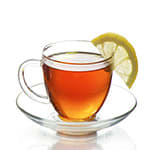
Tea has been cultivated in China since the 300's, and China is today the world's largest producer, followed closely by India. When Europe had access to tea, it was only a drink for the richest, but the British East India Company and the new fast ships led to increased trade and even "ordinary people" got access to the drink. The start of the American Revolution became whit the "Boston Tea Party" a protest against the British trading policies. Oils of Tea gives perfume an herbaceous, earthy scent with fresh..
Read more -
Tea rose

Tea rose is a hybrid rose of ancient Chinese origin, with large flowers and (at least in the early varieties) slender pendulous stems. The scent of the flowers reminded the European sailors of that of a freshly opened old-fashioned tea box, which is one theory about the origin of the name, another that the first varieties were imported from the Chinese nursery Fa Tee. Tea roses were introduced to Europe around 1810 via England and were soon considered one of the most exclusive varieties, but with the Depres..
Read more -
Teak

Teak is the name of a type of tropical hardwood. The wood comes from Asia, mainly India, Indonesia, Thailand and Pakistan. The wood has very good properties for the manufacture of furniture and furnishing. Teak can be used to outdoor furniture as the wood is particularly resistant to rot and other attacks because of its natural oil. Teak scent is very woody, with hints of leather, amber, Patchouli and cedar.
Read more -
Thyme

Thyme has been used by man for a long time, actually as long as some 6000 years. We are used with thyme in cooking but when the herb first came into use, it was popular to have in incense and was associated by the Greeks with courage. In medieval Europe they lay Thyme under the pillow when the herb was said to provide a safe sleep and keep the nightmares away. The scent is sweet, herb and can be experienced somewhat medical.
Read more -
Tobacco
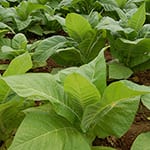
Tobacco has been grown for a long time, but cultivation was not really speed until the Europeans came to America. Tobacco can be used in different ways, but perhaps we are most familiar with snuff and cigarettes. During the 1700s it was common to snuff in the nose, the trend disappeared during the 1800s and then began to sniff rather than the way we do today. Tobacco oil gives a rich, warm and earthy tobacco scent.
Read more -
Tobacco Flower
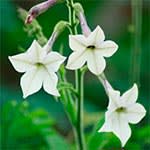
Tobacco flower is a common garden plant named after Jean Nicot de Villemain, the man who introduced tobacco to France. It comes in various colors, but it's the white one that has the strongest scent. The flower has a sweet fragrance, which often becomes stronger in the evening and at night.
Read more -
Toffee apples
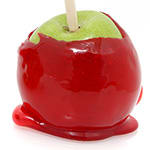
Toffee apples or candy apples are whole apples that have been dipped in a sugar coating colored with red food coloring, with a stick inserted as a handle. Toffee apples originated in the United States where they have been produced and sold since the early 1900s. The apples are common to the Halloween festivities and markets, circus and fairground. The scent is warm, sweet and a little burnt.
Read more -
Tolu Balsam

Tolu balsam is a yellow-brown resin that, like Peru balsam, comes from the Myroxylon tree, which grows in South and Central America, as well as the West Indies. Tolu balsam is extracted by cutting V-shaped incisions into the tree bark, which releases an oily, resinous, aromatic liquid, meant to heal the tree's wounds. This liquid is collected, and an essential oil is distilled from the balsam. The extraction process differs from that of Peru balsam, and the fragrance is somewhat sweeter and softer, more rem..
Read more -
Tomato leaf
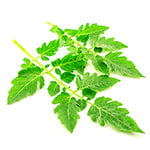
Tomato is a fruit but it is often referred to as a vegetable. It is grown throughout the world primarily for its use in cooking. The perfume industry mainly uses the leaves extracting an aromatic note with a lot of earthy freshness and a little tanginess to it.
Read more -
Tonka bean

The Tonka bean grows mainly in South America but on later years man has also begun to cultivate the tree that can be over 1000 years old in Africa. Tonka bean has been an important bean in some ancient mythologies. It was believed that Tonka bean had magical powers and if you brewed tea on the bean, it would give a strong immune system and cure depression. Tonka bean is harvested when it falls off the tree. Tonka bean brings perfume fragrances of celery, freshly mown grass, sweet hay, anise and vanilla.
Read more -
Tropical fruits

A general scent of sweet, lush, colourful tropical fruits: coconut, pineapple, guava, etc.
Read more -
Truffle

A warm and inviting fragrance note in the gourmand category, with earthy notes. There are both black truffles and white truffles, which are considered particularly exclusive.
Read more -
Tuberose
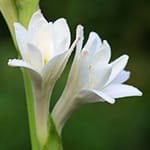
Tuberose has its roots in Mexico but is also a common feature of Indian culture and is widely used at weddings. Tuberose flowers at night and are in various Asian languages called "Night fragrance" or "smell the moon." The scent that is said to be a woman's favorite is rare and is found only in more exclusive fragrances when scent is expensive to produce. The scent is described as heavy and sweet as honey floral with hints of spice.
Read more -
Tulip

Tulip is a bulbous plant of the family Liliaceae. The genus is originally from southern Europe, north Africa and parts of Asia. Garden Tulip came to Europe from the Ottoman Empire in the 1500s. Today we associate tulips with Holland which is the main exporter of tulips and where every year organizes tulip festivals. The tulip is a very popular and decorative flower found in countless colors, both plain and striped. The tulip has a mild, sweet fragrance.
Read more -
Turmeric
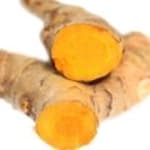
Originally from Southeast Asia, turmeric is a popular spice in Indian and Thai cuisine. Turmeric is also known for its bright yellowish colour. The root is also used as a medicinal remedy for stress and anxiety, often added with black pepper to increase nutrient absorption. As a fragrance note, turmeric is characterised by a warm, earthy, spicy tone.
Read more -
Tweed

Tweed is a wool fabric that's most resistant and has therefore become iconic and a synonym for robust clothing used by British gentlemen in hunting and other outdoor activities. Tweed has a scent that leads the thoughts to the countryside, to eccentric Scottish gentlemen and old mansions.
Read more -
Vanilla
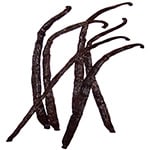
Vanilla has a long history and was discovered in today’s Mexico today. The vanilla was then the most desirable and rare spice to the Aztecs and they got vanilla instead of gold at conquest and in reparations. The vanilla was entirely unknown to us Europeans until the 1500s when it received its present name which means "little capsule" in Spanish and Portuguese. Vanilla is grown in several locations around the world, mainly in South America, Africa, Asia and Oceania. The world's biggest vanilla producer is n..
Read more -
Vanilla Flower

The note vanilla flower is a fantasy note that is supposed to derive from the flower petals of the orchid Vanilla planifolia, which is native to Mexico, Central America, Colombia and Brazil. However, the flowers themselves do not emit a scent, but the vanillin comes from the vanilla bean, the dried, pod-like fruit of the vanilla orchid.
Read more -
Velvet
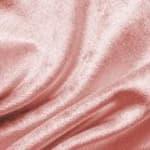
Velvet is a synthetic accord generally constructed from patchouli, floral notes, and ISO E Super (a synthetic molecule with amber and woody undertones with powdery nuances) to describe a feeling of softness and give the fragrance a smooth character – that is, "velvety smooth." Hints of white musk may also be present.
Read more -
Velvione (musk)

Velvione™ is a powerful powdered synthetic musk with some animal elements, produced by Givaudan. It is very rich and stable, and biodegradable. It is excellent in more elegant perfumes where it adds a powdery volume and musky softness, and is also popular as an ingredient in some detergents.
Read more -
Verbena
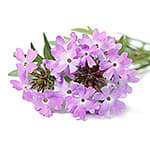
Verbena is believed to have arrived in Europe during the 1600s from “The New World”. The leaves can be used for seasoning of foods as Verbena has a citrus flavor and is also used for tea. By distillation essential oils are extracted that gives a fresh and fruity citrus scent which also has elements of a certain sweetness and roses.
Read more -
Vetiver
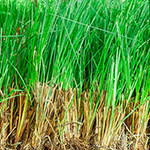
Vetiver or Chrysopogon zizanioides is a grass with its origins in India. Vetiver has a range of uses, ranging from that you can make ropes of it to extract oils for aromatherapy and perfume. The oils are extracted by the roots are dried and then distilled. The scent is described as earthy and woody with notes of resin and bitter-sweet smokiness.
Read more -
Violet

Violet is a flower found in hundreds of different varieties and growing worldwide. They say that Violet should have medicinal properties and can help people with infections or rheumatism. The aroma from the leaves is extracted by distillation and the smell is different from the actual flower. The aroma from the leaves is grassy, very green scent with notes of cucumber and flower.
Read more -
Violet Flower
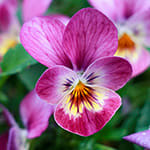
The family of violet flowers is a large one. The family contains between 400-500 different flowers. The flowers exist all over the world and are grown for perfume making in French Grasse. The Violet Flower is beloved over the whole world, in ancient Greece it was used as a cure for, well everything. The Prophet Muhammad described the scent as superior all other flower extracts. In France the violet flower became a symbol of those loyal to Emperor Napoleon. The scent is much different from the violet leave..
Read more -
Vodka

A mild alcoholic note with a light aromatic piquancy, reminiscent of vodka drinks and light, fresh cocktails.
Read more -
Wasabi
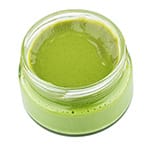
Wasabi is also called Japanese (Green) horseradish and has been cultivated in Japan for over a thousand years. It also grows naturally along rivers in Japan. The root is used as an ingredient and seasoning of Japanese food such as sushi. It has a strong characteristic flavor that comes from the isothiocyanates it contains, and which have an inhibitory effect on the growth of microbes, which may explain why wasabi is traditionally eaten with fresh fish, which can quickly become poor. In perfumes adds wasabi..
Read more -
Watermelon
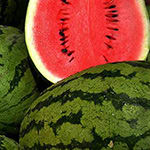
Watermelon originated from the south out of Africa where it grows wild, no one knows, however, were the first watermelons were cultivated. Some researchers believe that Watermelon was grown as early as about 4000 years ago, when out of the Egyptians. From Egypt, the melon spread throughout the world, first to Asia and China and then to Europe. China is the world's largest producer of watermelons. The aroma of watermelon is crisp, fresh and fruity.
Read more -
Wheat
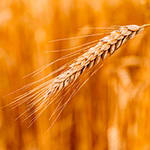
Wheat is a grass plant that grows throughout the world. Wheat is used in baking and other cooking as well as feed.In perfumes wheat gives a mild, sweet scent.
Read more -
Whipped Cream
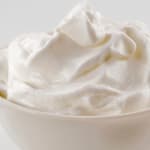
Cream is a common ingredient in many fragrances and perfumes, especially in fragrances called 'gourmand' or 'savoury' because the scent is reminiscent of food. The scent of cream is soft, creamy and slightly sweet, reminiscent of the scent of milk and vanilla.
Read more -
Whisky

Whisky is mentioned for the first time in Ireland and Scotland around the 1400s and means "water of life" in Gaelic just as the word Aquavit in Nordic languages or the French “eau de vie”. The major producers of Whisky is Scotland and Ireland but there are also large American and Canadian brands, recently even Sweden and Japan also have begun to produce Whisky. In perfume, perfumers will use Whisky extract and the scent is Whisky like, but whit a hit of fuels. A very masculine fragrance.
Read more -
White chocolate
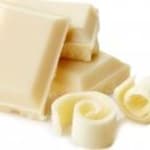
A sweet and less bitter chocolate flavour, with creamy, lactonic nuances and hints of cocoa fat.
Read more -
White flowers
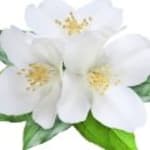
A floral fragrance accord that evokes associations with a mix of white flowers, including jasmine, tuberose, and gardenia. Commonly used in floral, light summer perfumes and often combined with aldehydes.
Read more -
White musk

White musk is musk produced by chemical means. Formerly it used out of animal musk from musk deer, but because the high price they have musk from plants and other animals become common. But even in this case synthetic musk. The aroma is soft, smooth and sweet with a hint of ambergris, blackberry and ambrette.
Read more -
White pepper
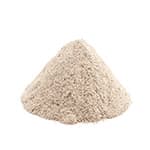
White pepper comes from the same plant as black pepper and green pepper. What distinguishes pepper varieties is the harvest and preparation. The pepper plant originated in India and has been cultivated for thousands of years. In contrast, white pepper has a shorter history than black pepper, which was the first use. White pepper is now common to have in light sauces, mashed potatoes or white meat because of the black pepper stand out visually. The smell of white pepper essential oils is fiery and peppery w..
Read more -
White wine

White wine can be prepared from both the green and blue grapes while the production is not dependent on contact with the grapes shell. The shells separated from the must during pressing and the must is transparent. White wines are fermented usually at a lower temperature than red wine, about 12-14 degrees C. White wines are available in different styles, ranging from light, fresh and fruity to oaked, flavorful wines. In perfumes add white wine a fresh, tangy scent.
Read more -
Woody accords

An umbrella term used to refer to a composed accord of fragrance notes derived from wood materials, primarily various types of trees as well as certain shrubs (such as patchouli) or grasses like vetiver. The accord is most often found in the base of a perfume.
Read more -
Wormwood
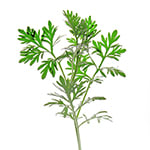
Wormwood grows wild in the temperate parts of Europe and Africa and the name is said to come from the plant's ability to cure worm infections. The plant is used as a flavoring in liquor and some wines, such as Vermouth is flavored with just wormwood. You get the essential oils from wormwood by distilling the dried flowering herb. The aroma is green and become healthy, warm and sweet with hints of coffee.
Read more -
Ylang-Ylang
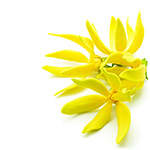
Ylang-Ylang or Ilang-Ilang is a tree that is native to India, Indonesia and the Philippines. The name means rare, and refers more to the smell than the actual tree. The scent used for both perfume and aromatherapy is said to have medicinal properties. Ylang-Ylang gives a tropical, very sweet fragrance that can be experienced as a blend of jasmine, bitter almond and peppermint.
Read more -
Yuzu

Yuzu is an East Asian citrus fruit reminiscent of grapefruit. The fruit is common in East Asian cuisine, in Japan Yuzu fruit is also popular to put in whole when you bathe as the fruit is said to protect the body against cold. Fragrance oils are extracted from the peel by cold pressing and the Yuzu gives a bitter, dry aroma reminiscent of grapefruit.
Read more
